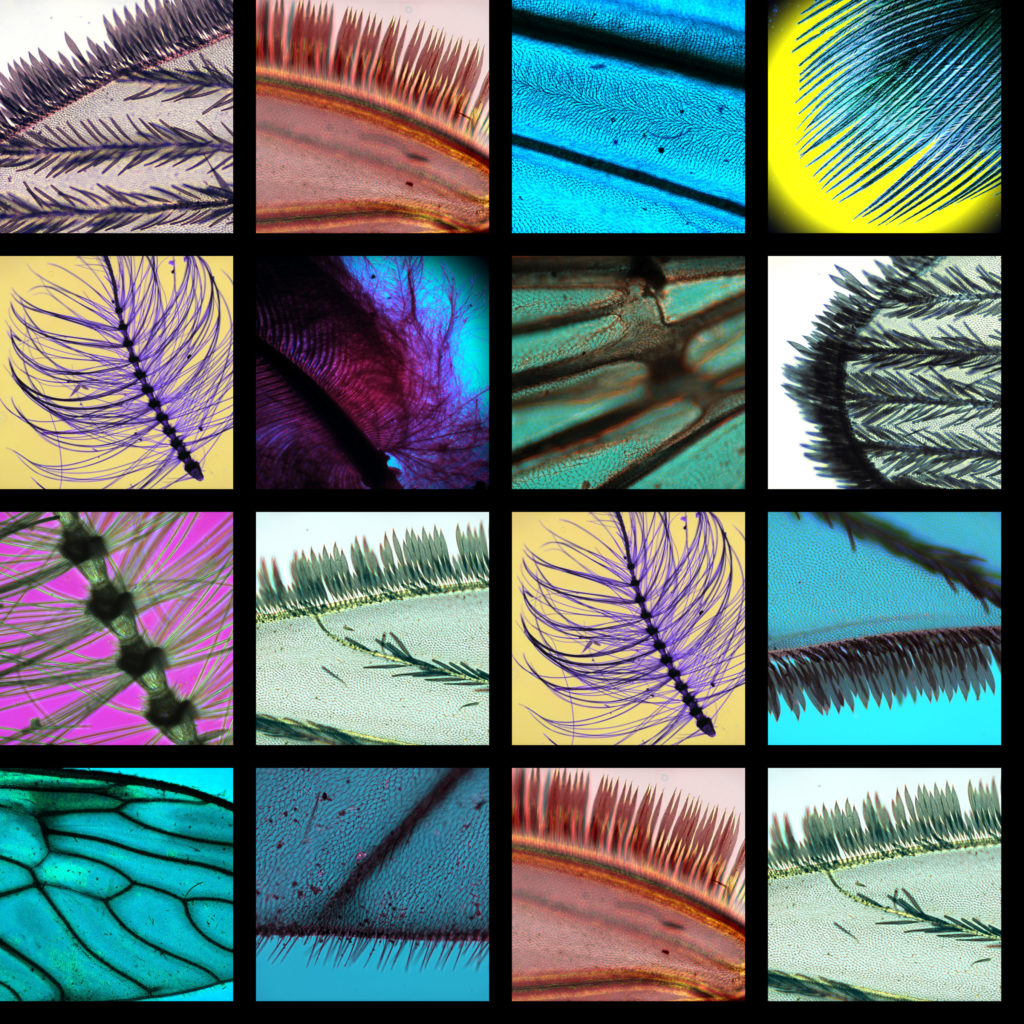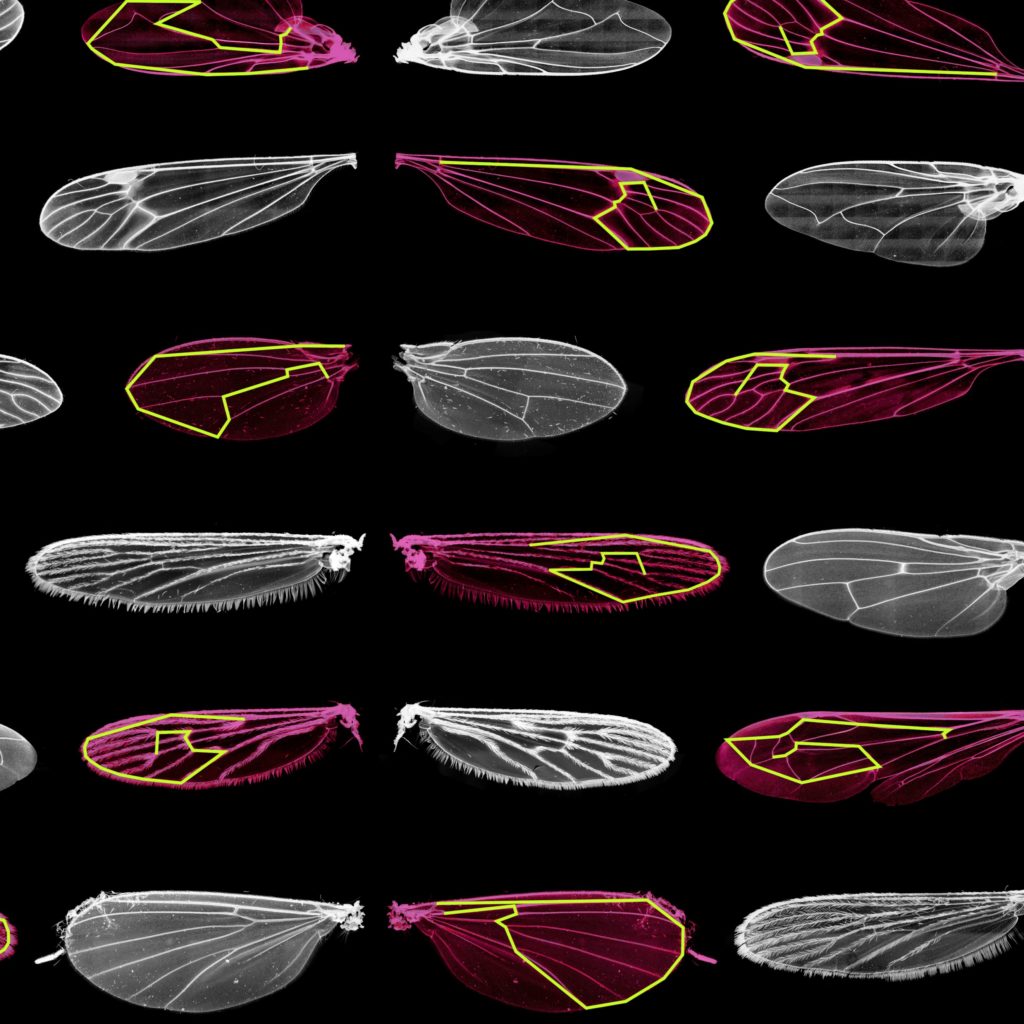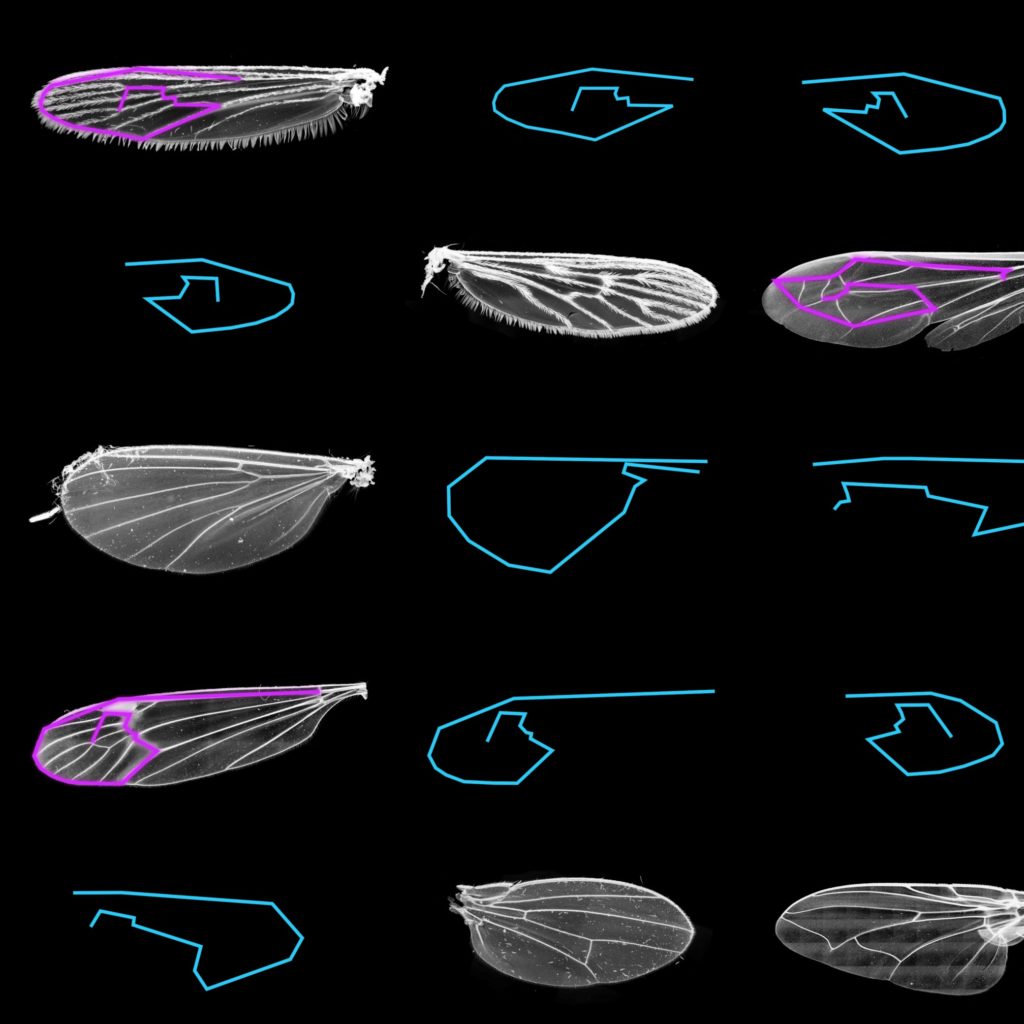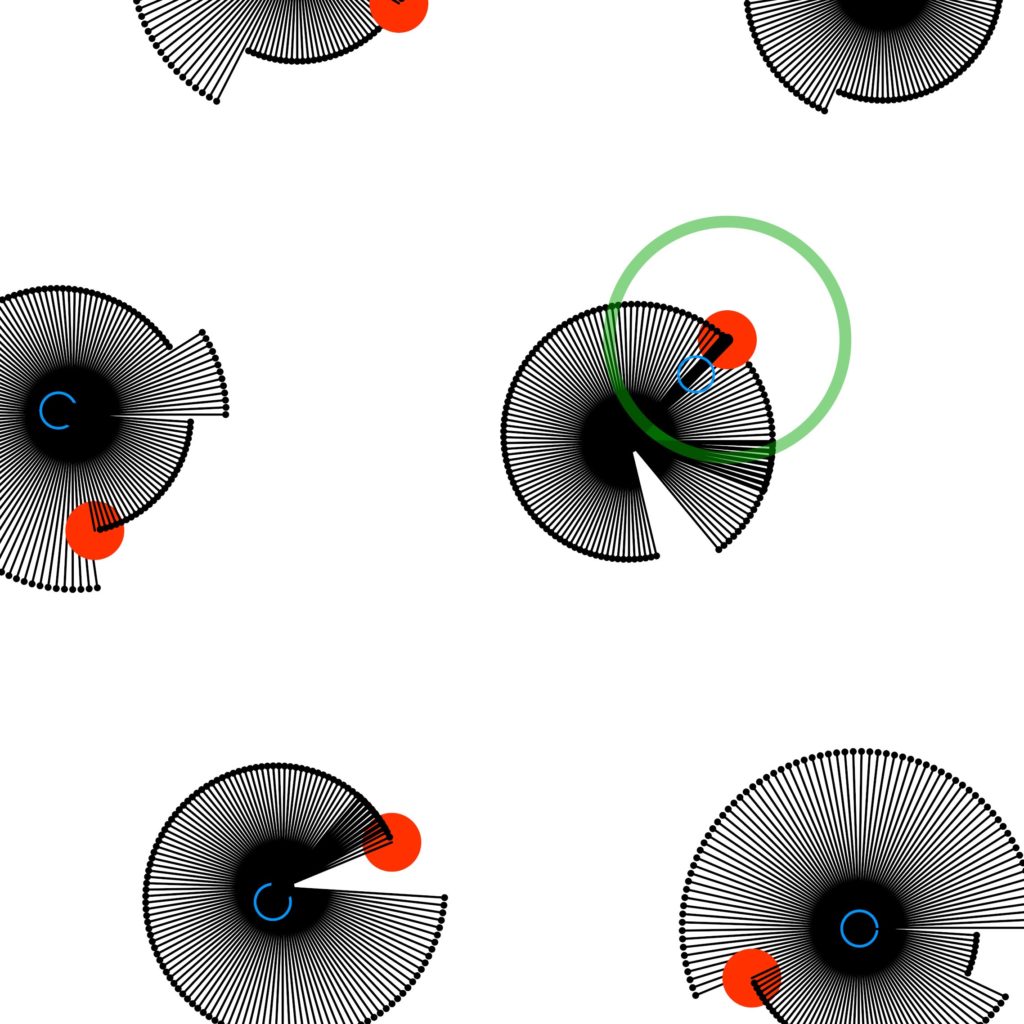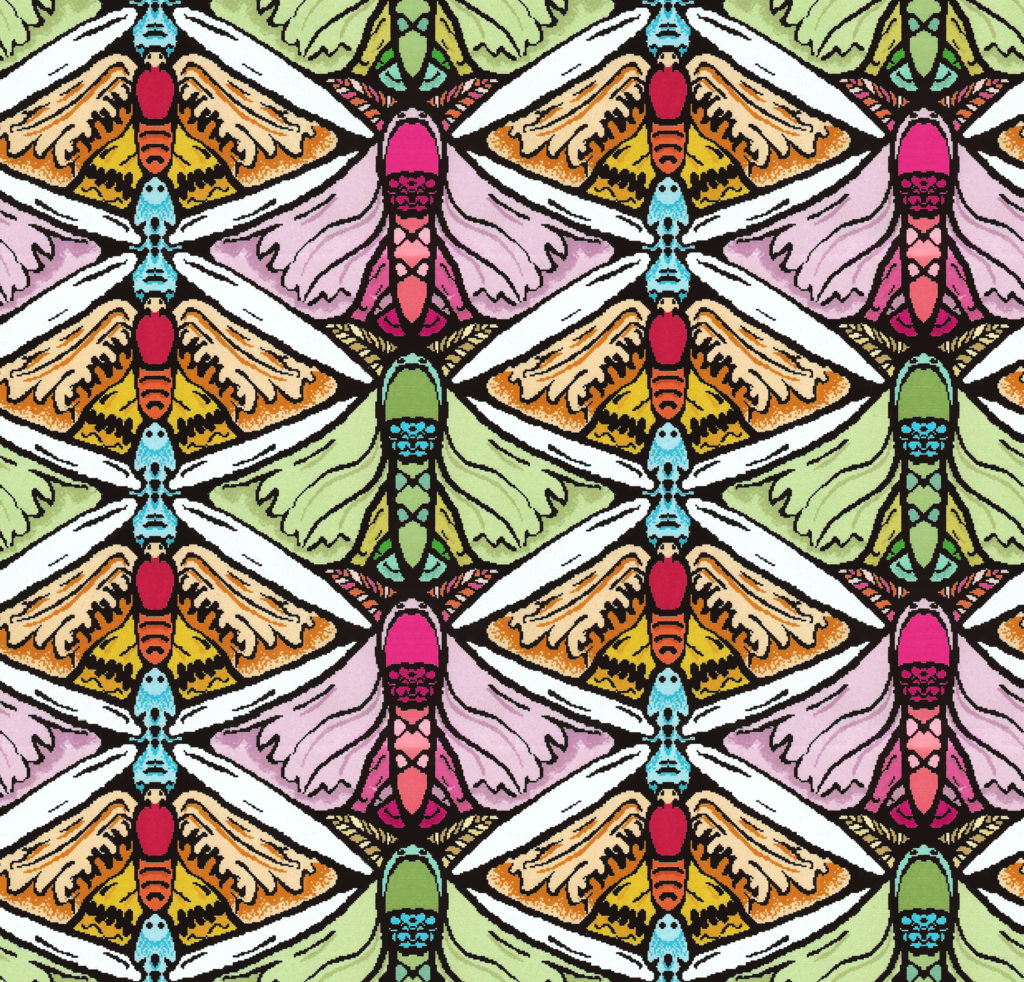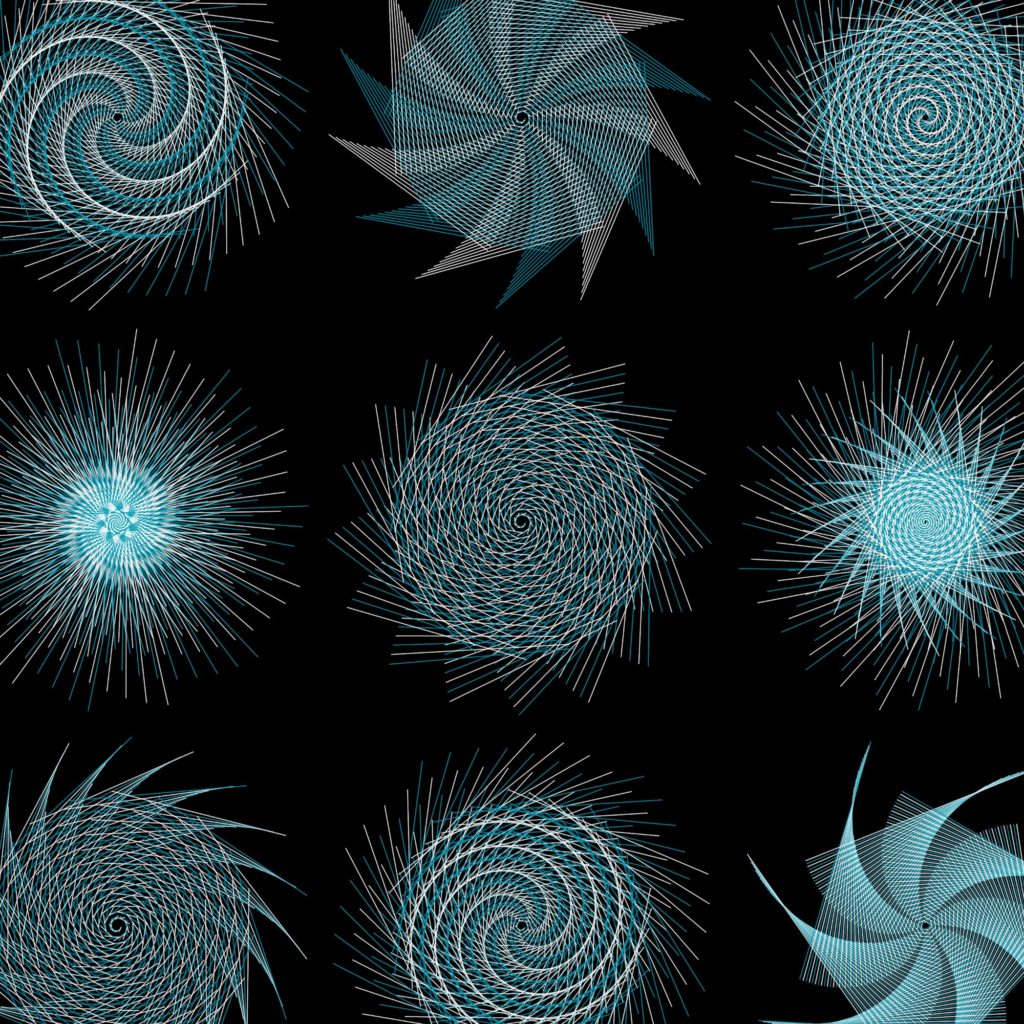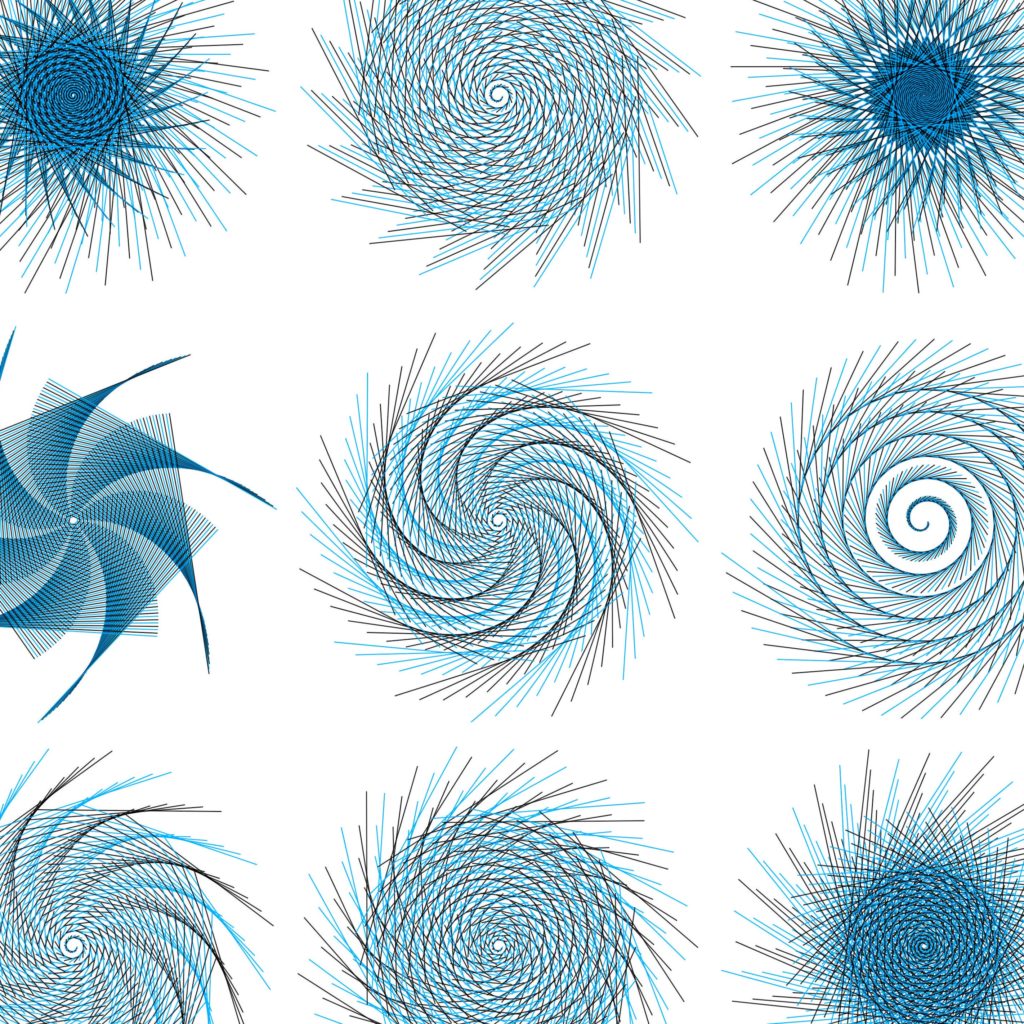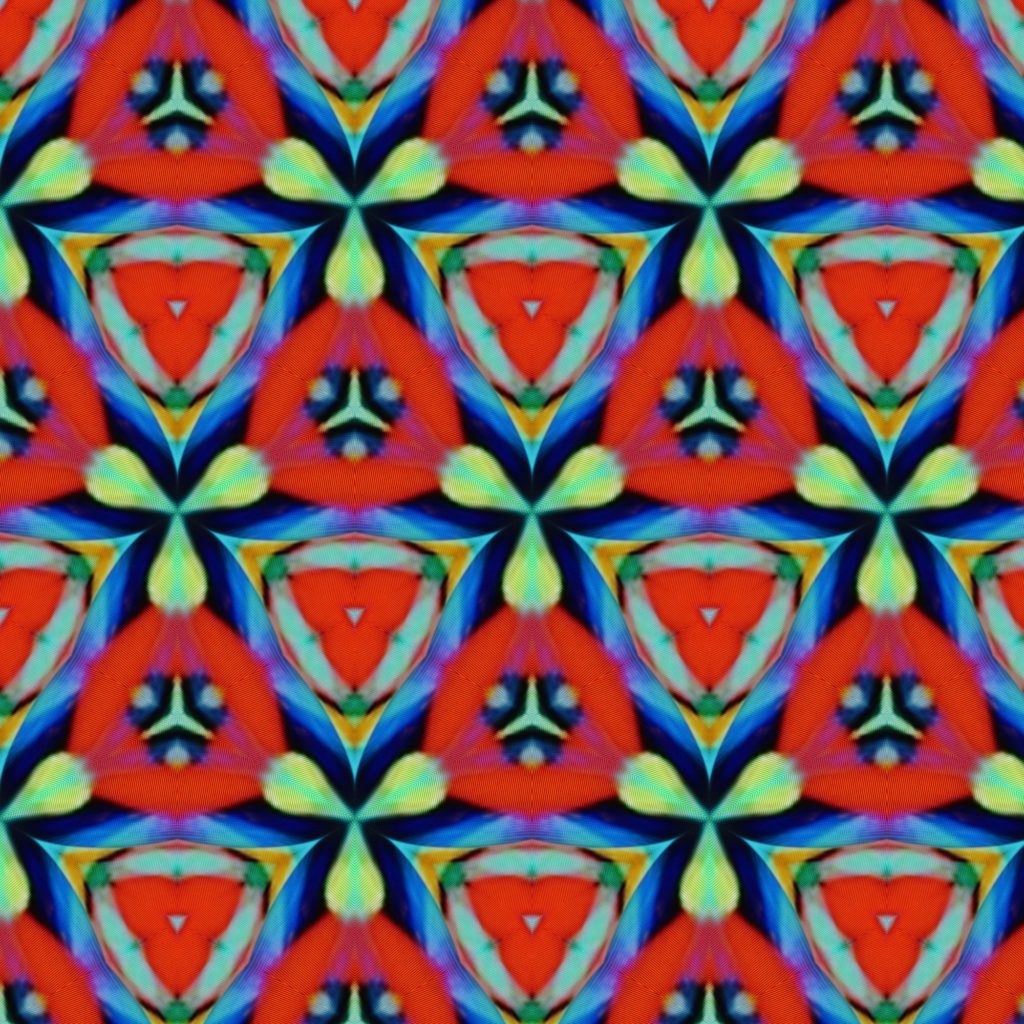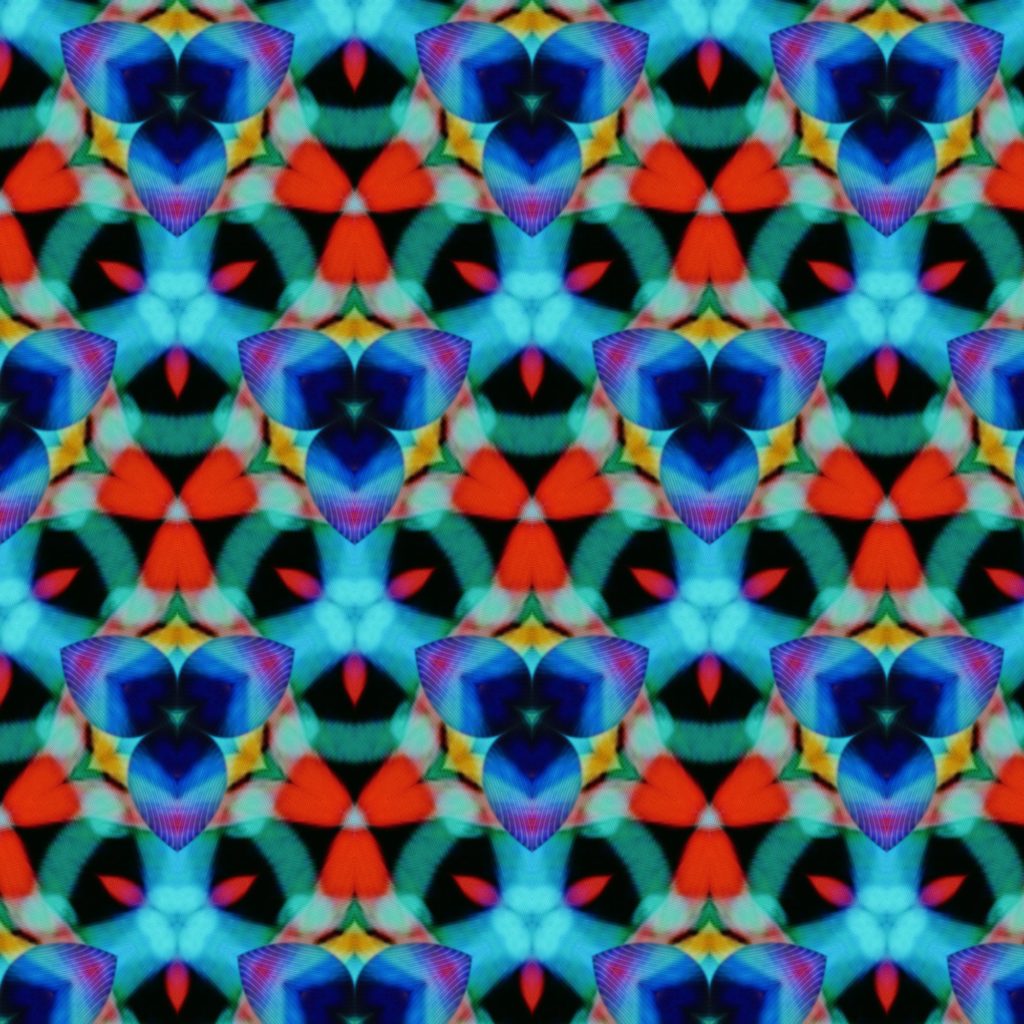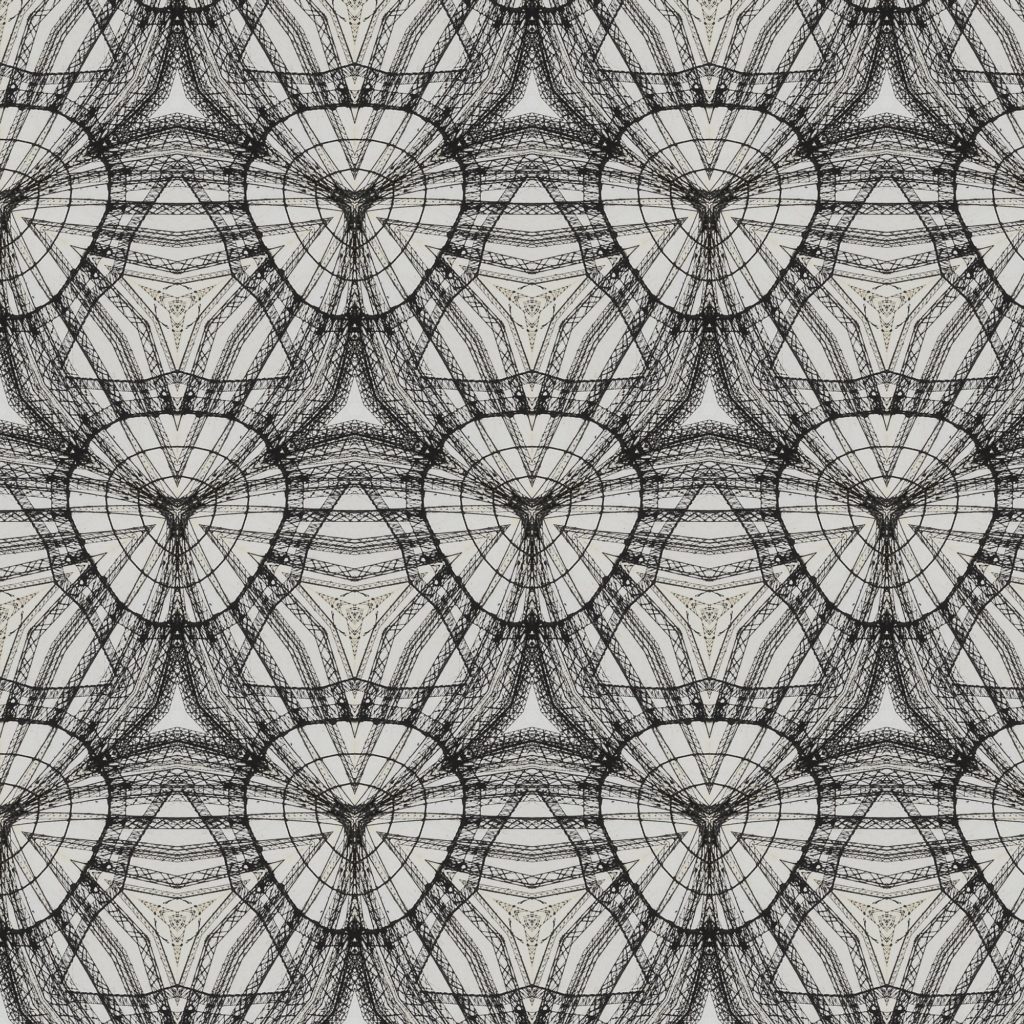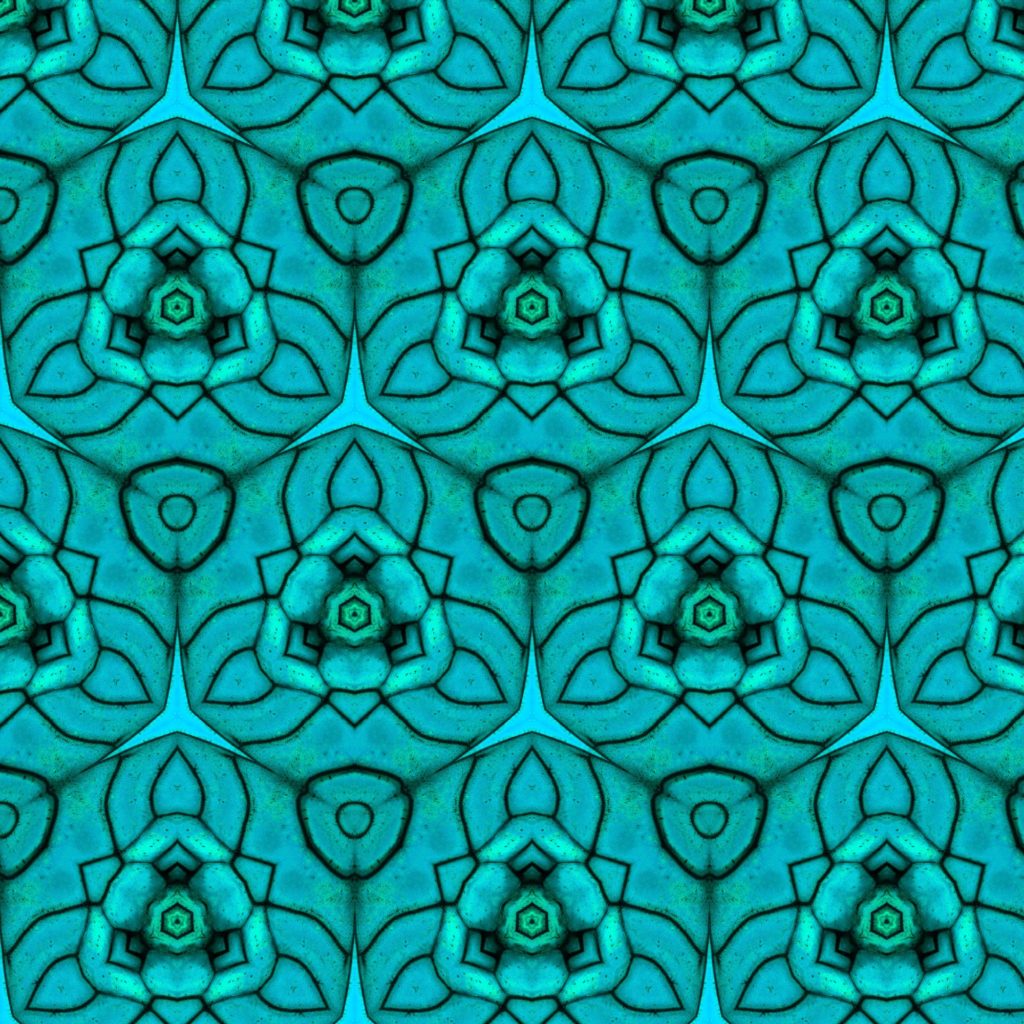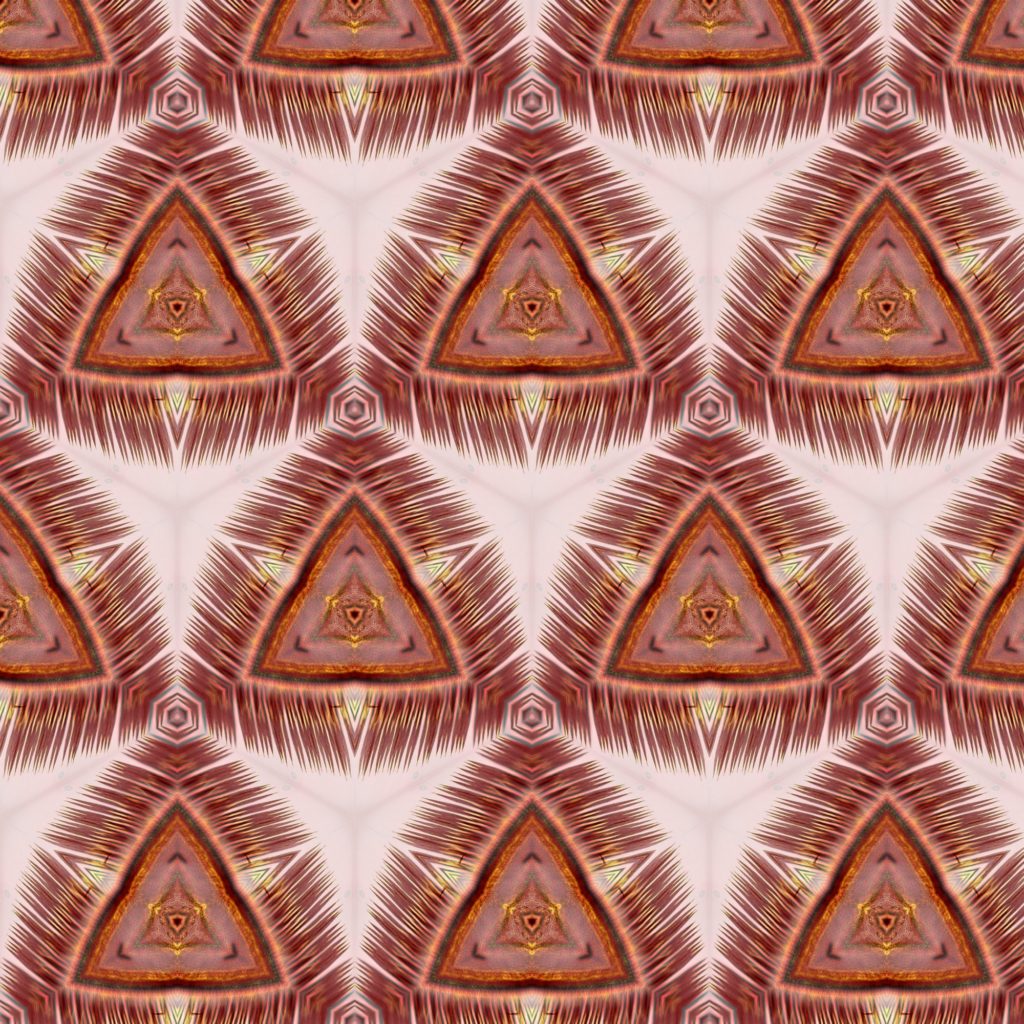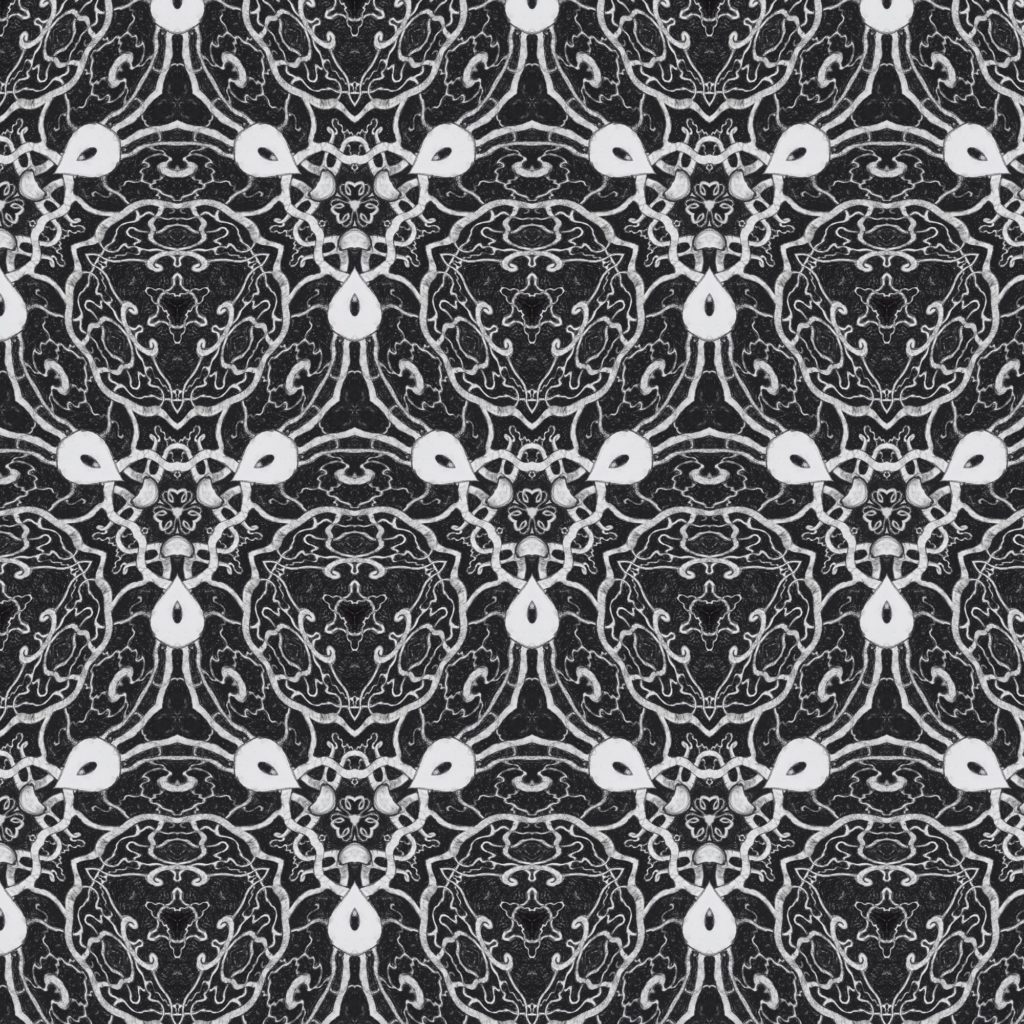I started to notice that many of my designs were suitable for repeating patterns, which is when I got attracted to the idea of working with an infinite plane instead of having a limited canvas. Click on any of the patterns, or scroll down, for a brief description of the concept behind them.
If you are interested in using any of the patterns for a project or would like to collaborate, please contact me.
Hover over or tap on the left image for more information (on a mobile, please rotate your phone to landscape to get the two images side by side)

Bouba/Kiki effect
This pattern is based on the Bouba/Kiki effect. This is an effect from psychology on how we connect sounds to shapes. A sounds like “Bouba” is generally associated with round shapes, whereas we tend to link sounds like “Kiki” with sharper shapes.
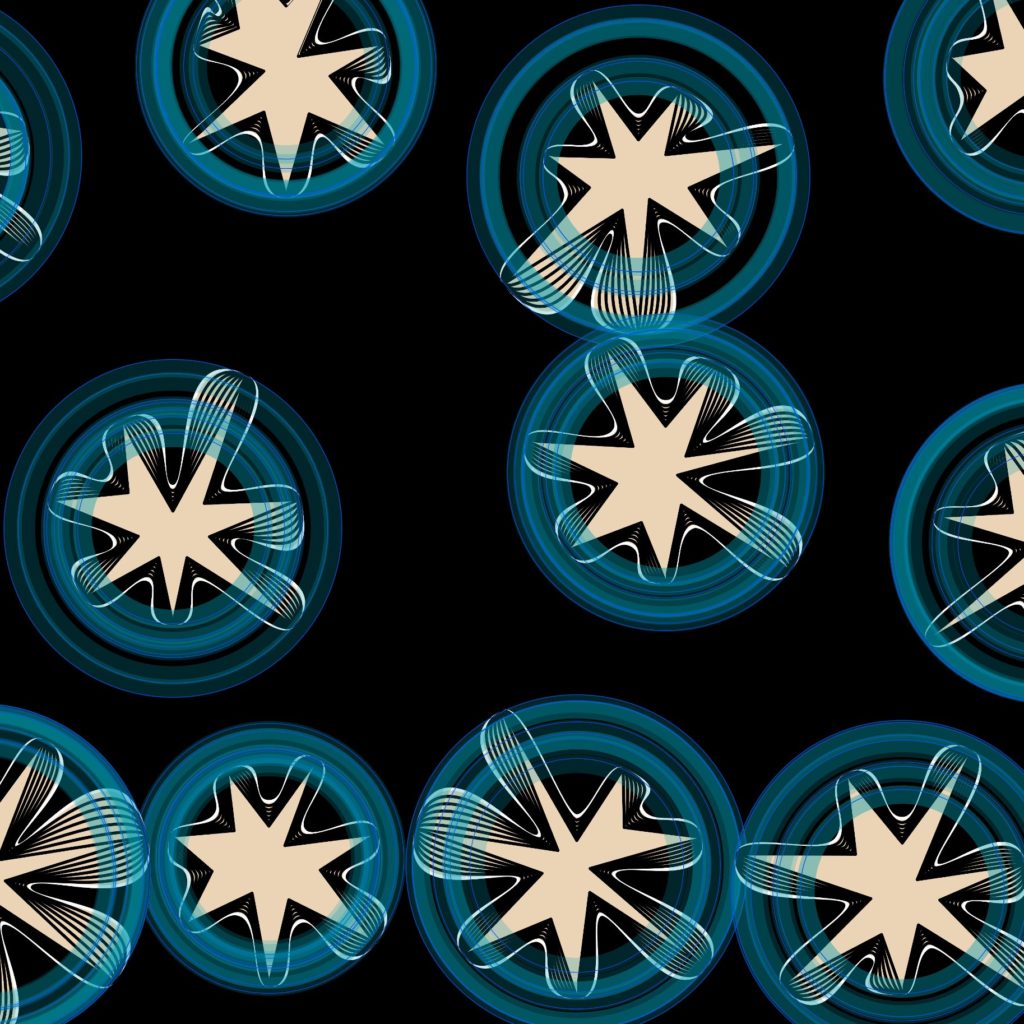
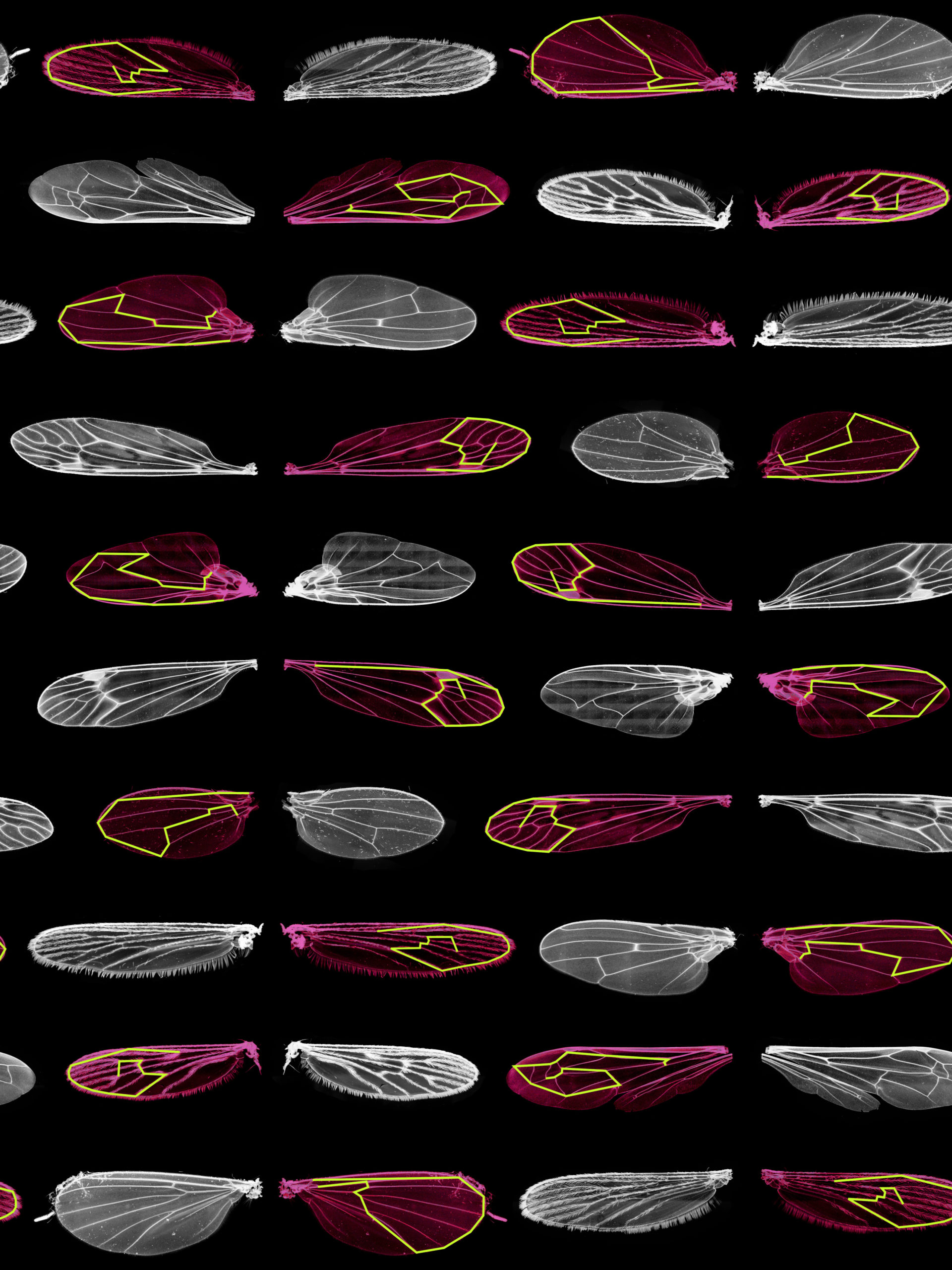
Insect wings
Many insect species can be identified by their unique wing patterns. The green lines connect a set of bifurcation points of the veins and provide enough information to classify many types of winged insects.
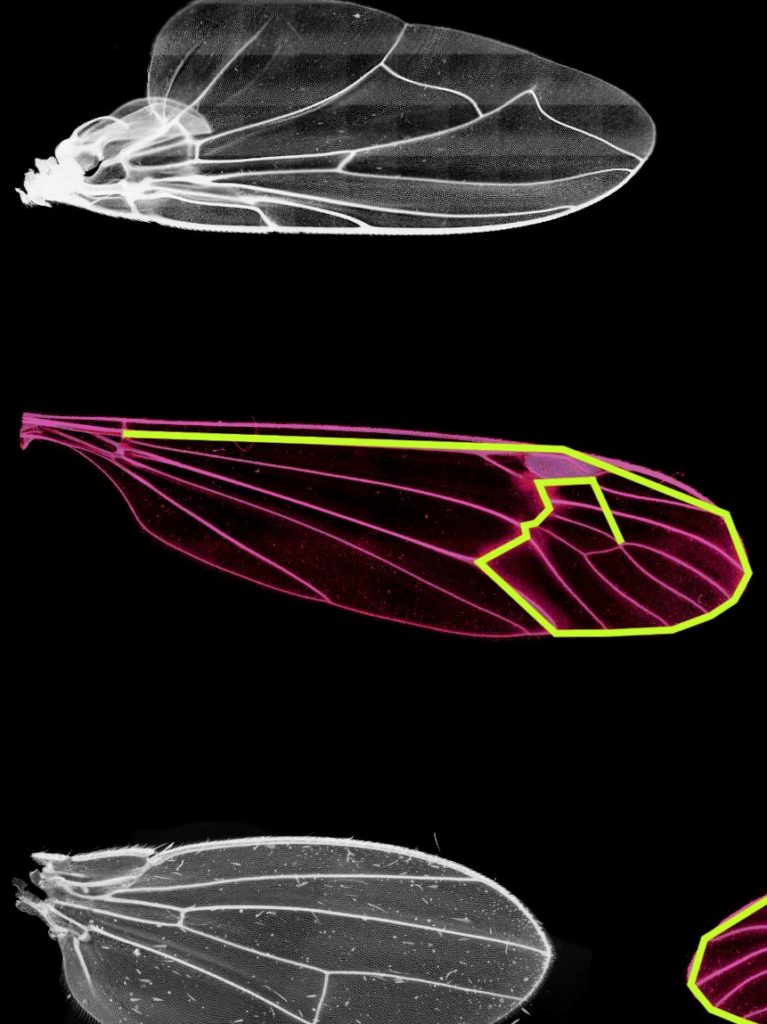
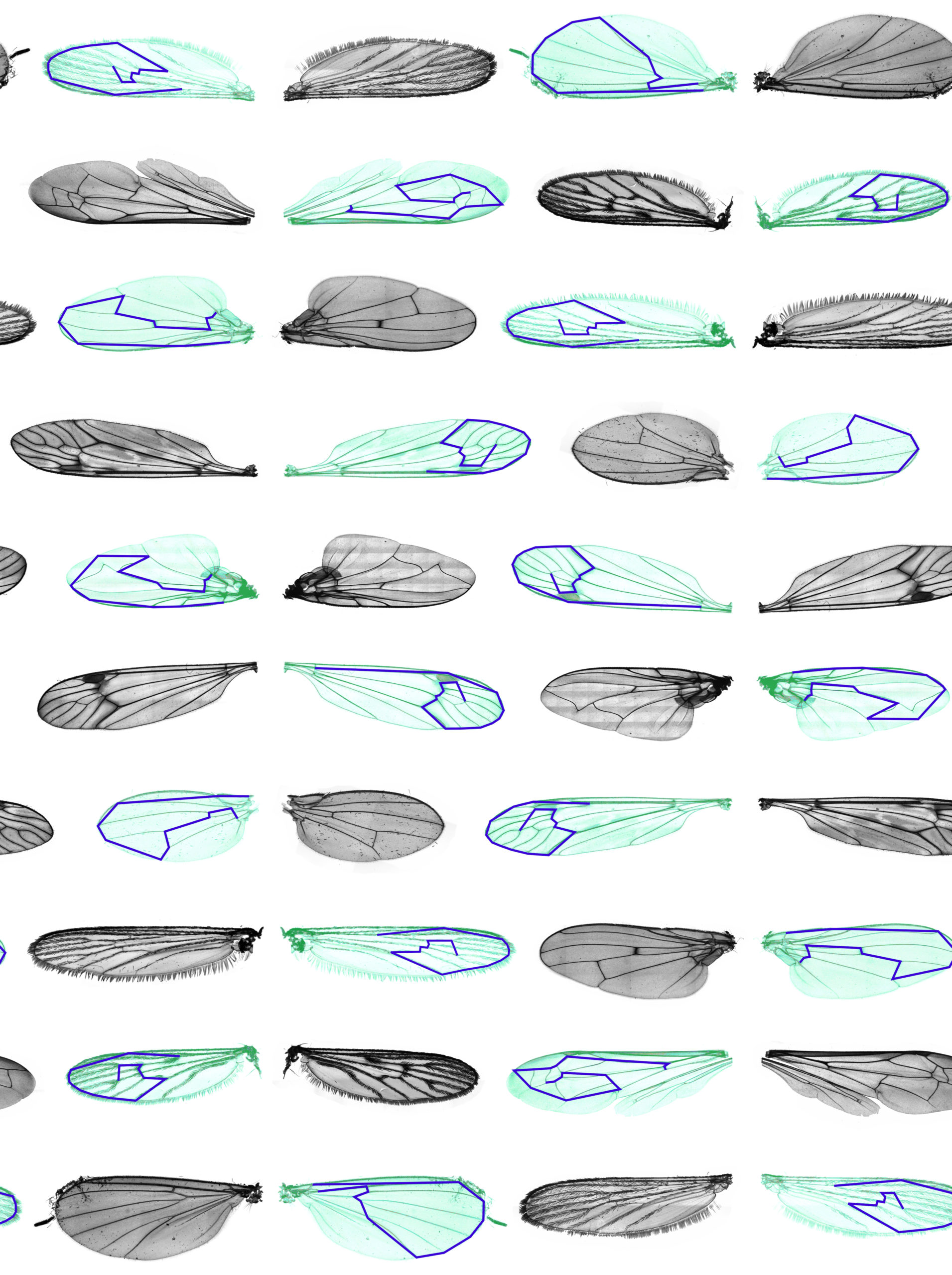
Insect wings_white background
This is a variation on the design above.

Insect wings_variation
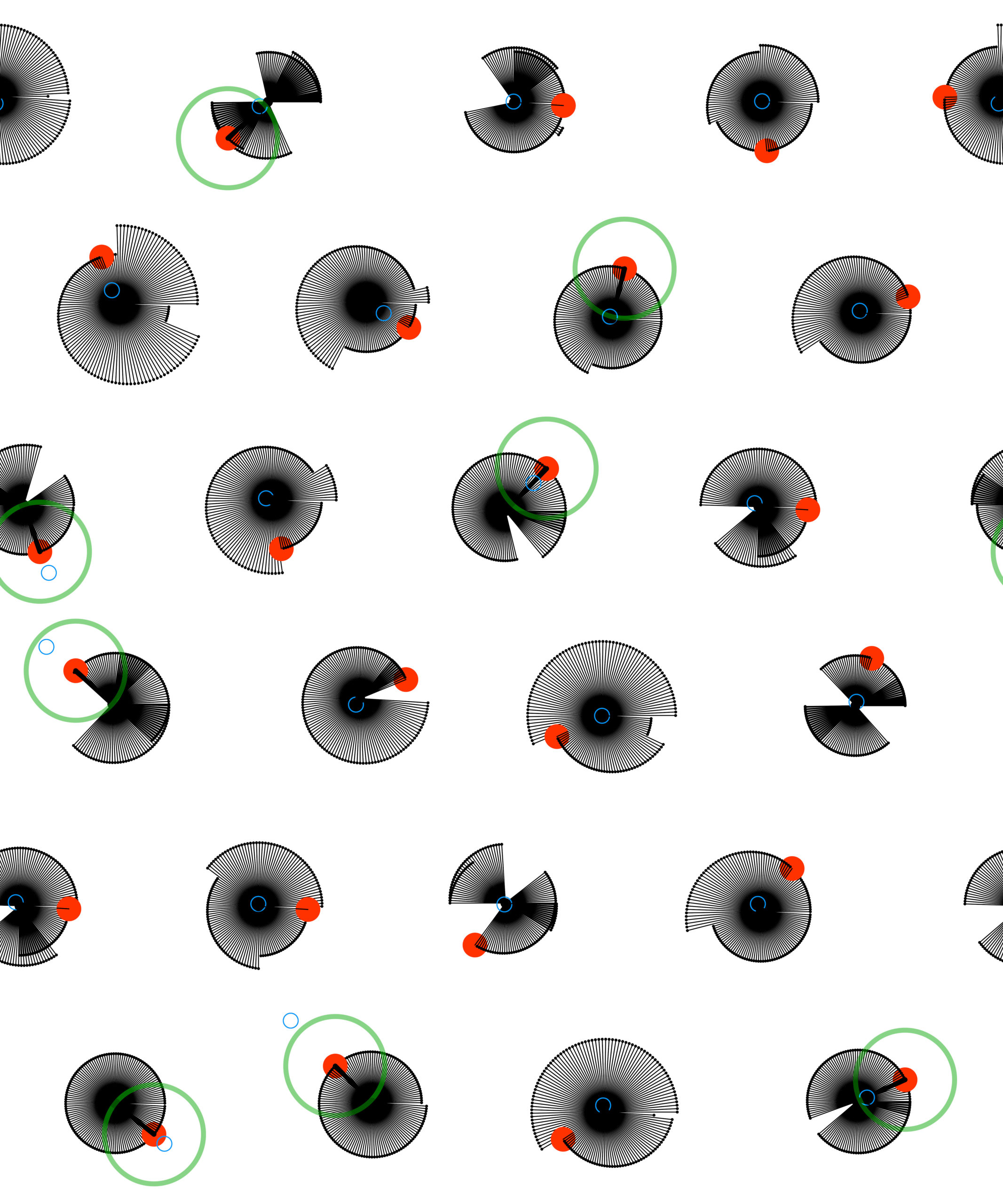
Broken code_02
After making a mistake in a code I was working on, the coded object started to take strange shapes, some of which I’ve captured and put together in this pattern.
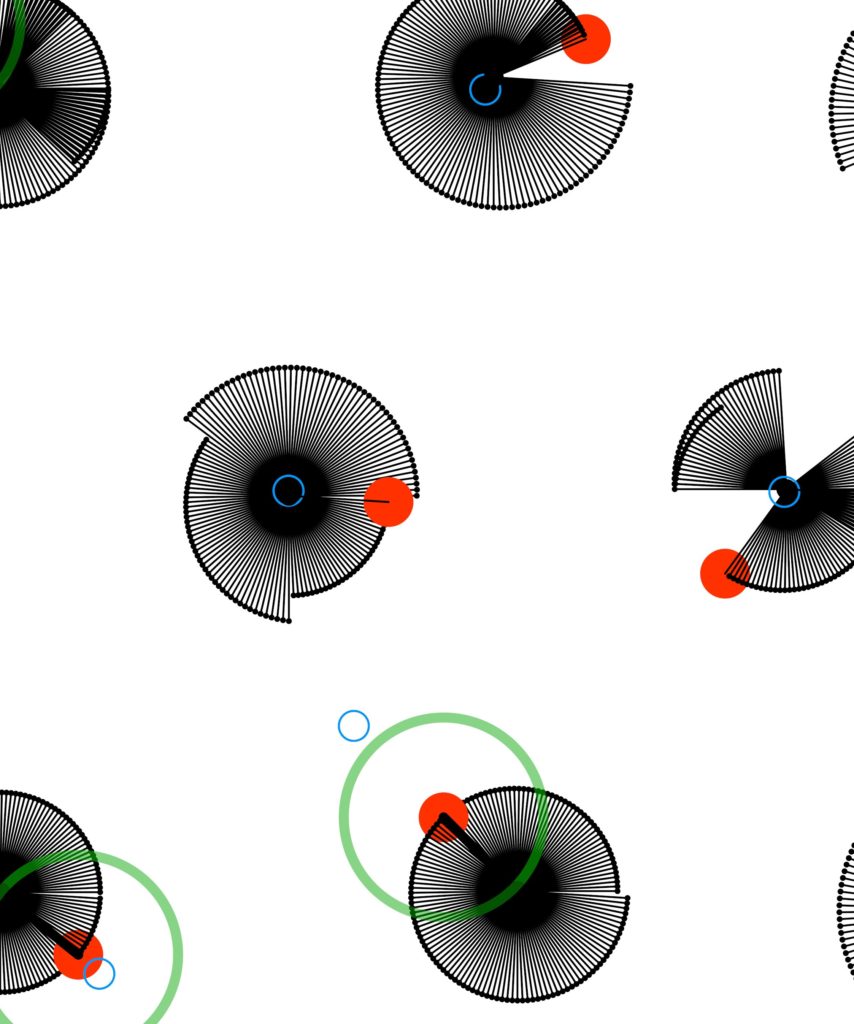
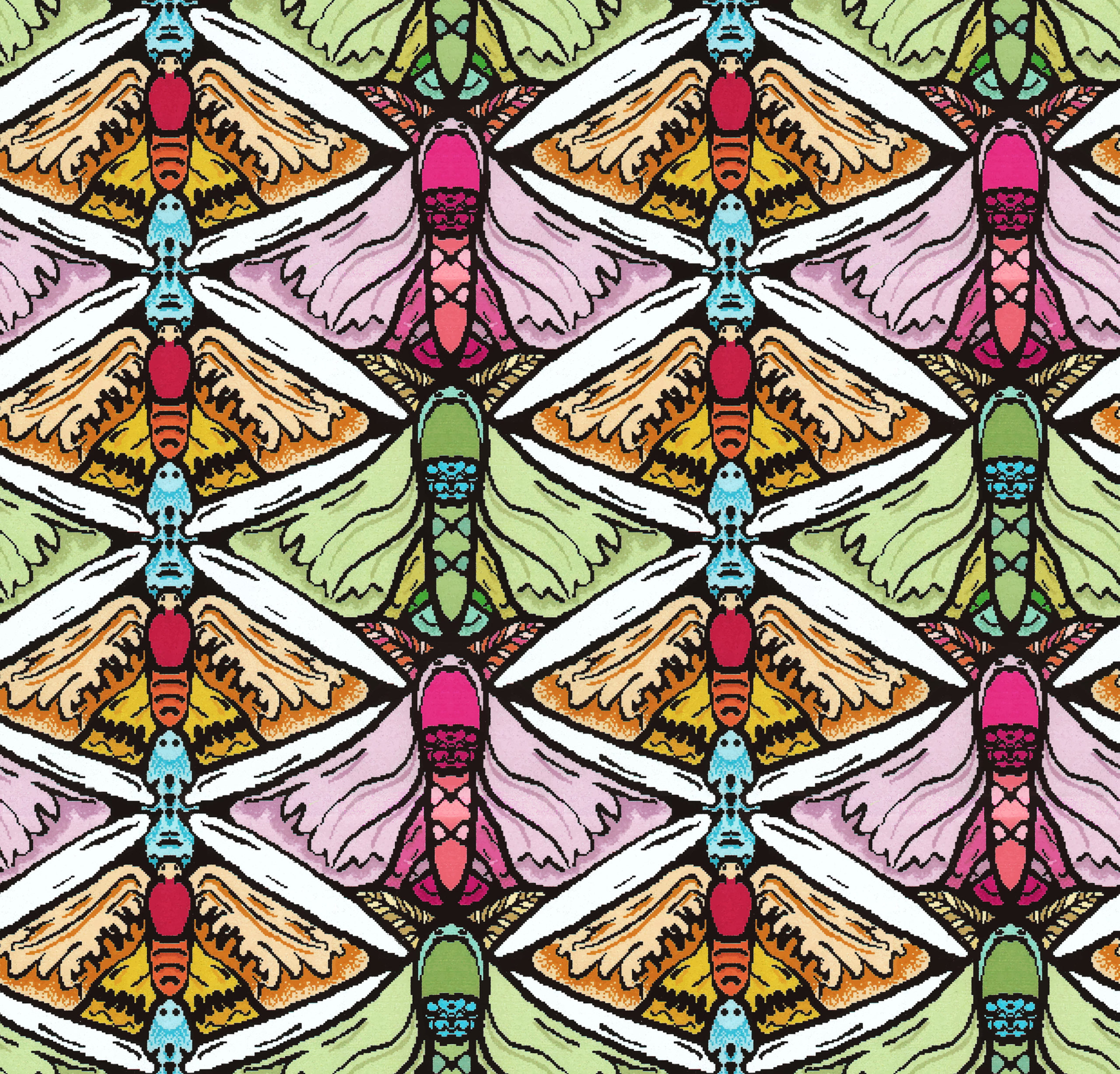
Moths
This is an infinite tessellation of moths.
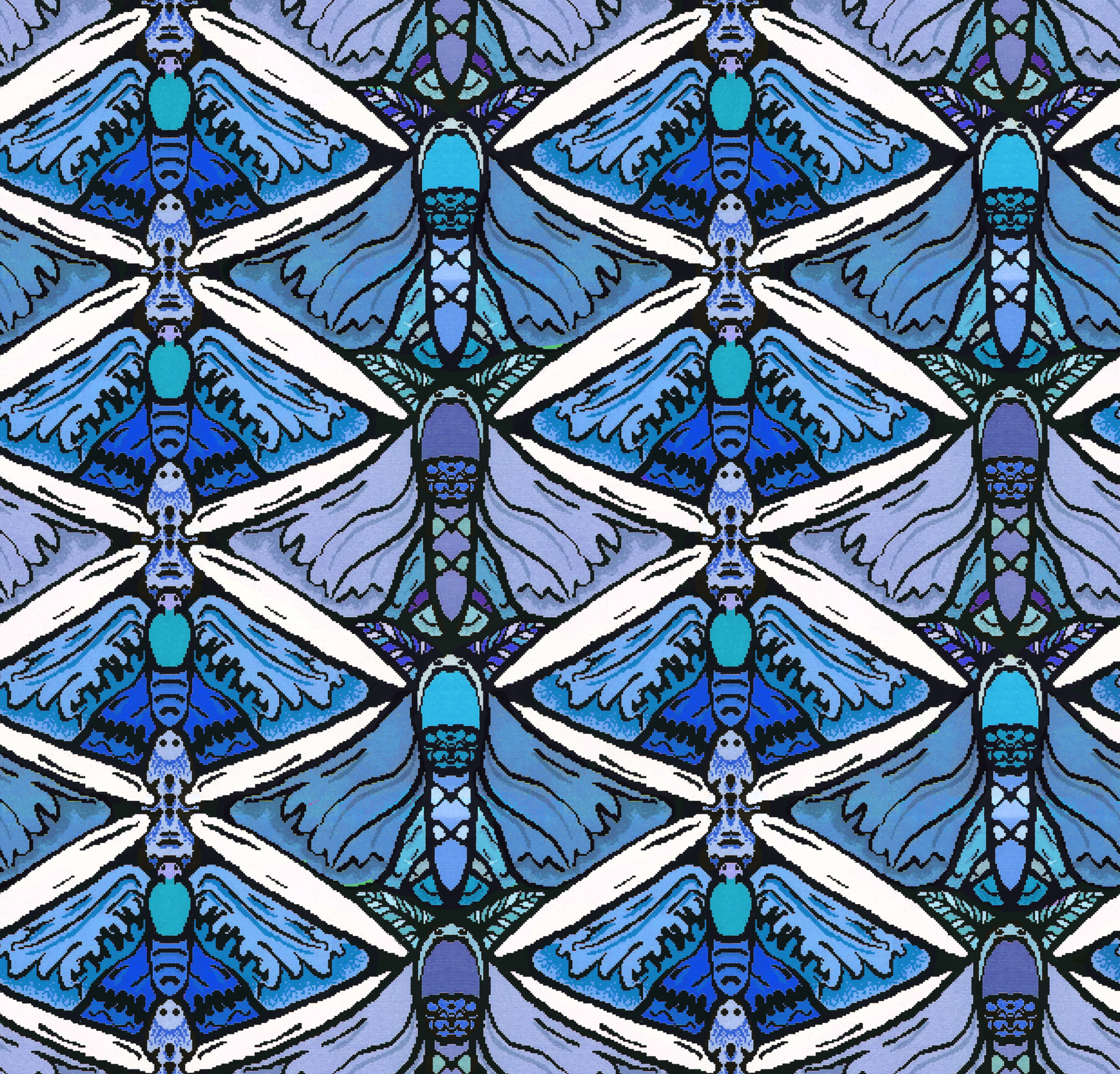
Moths_blue

Spiral circles
Nature can give rise to fascinating patterns according to underlying mathematical rules. The way in which sunflower seeds organise themselves is a nice example of how the golden ratio can be found in plants. The circles shown here are constructed using the golden ratio as well as other values, resulting in various organisations.
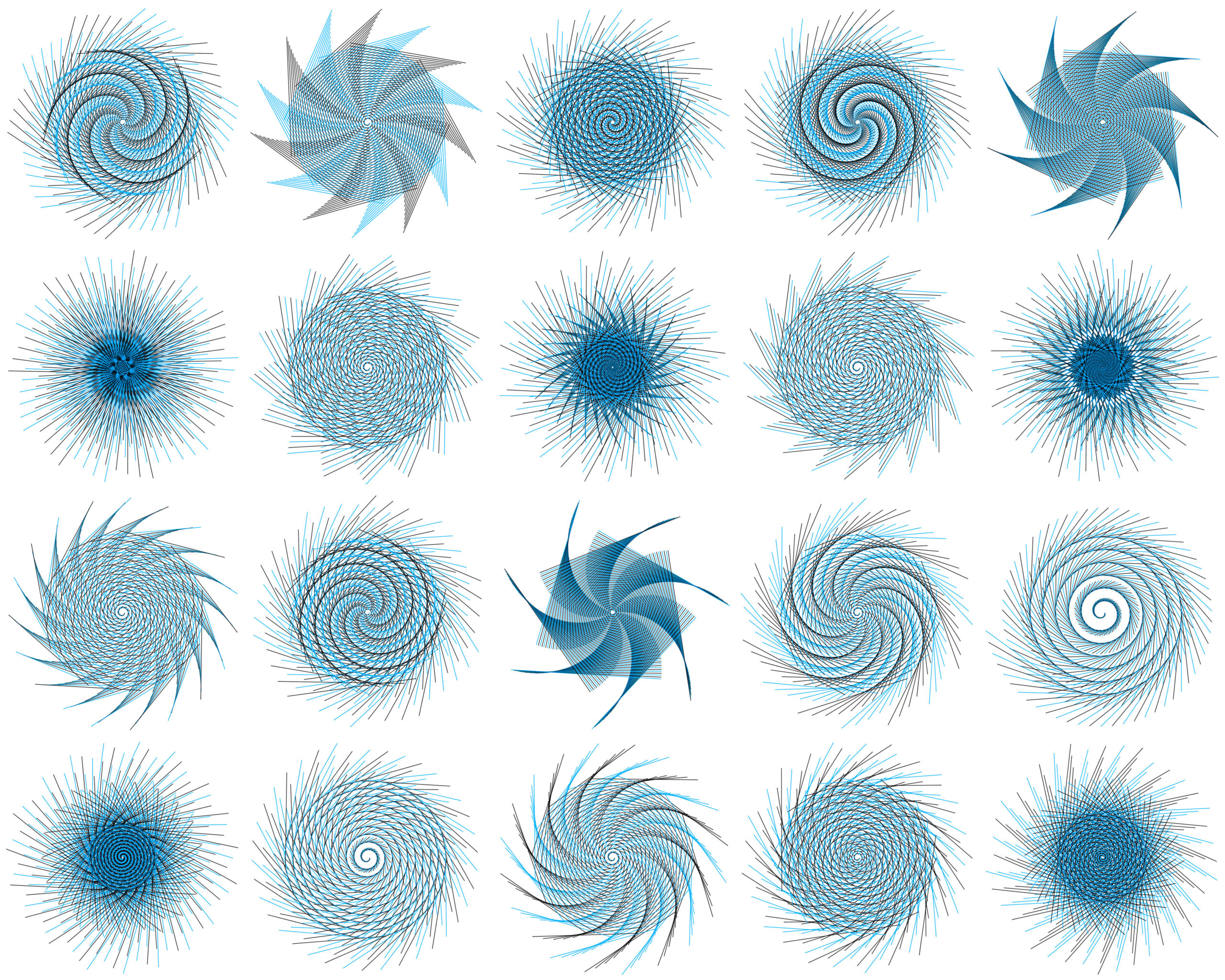
Spiral circles_white background
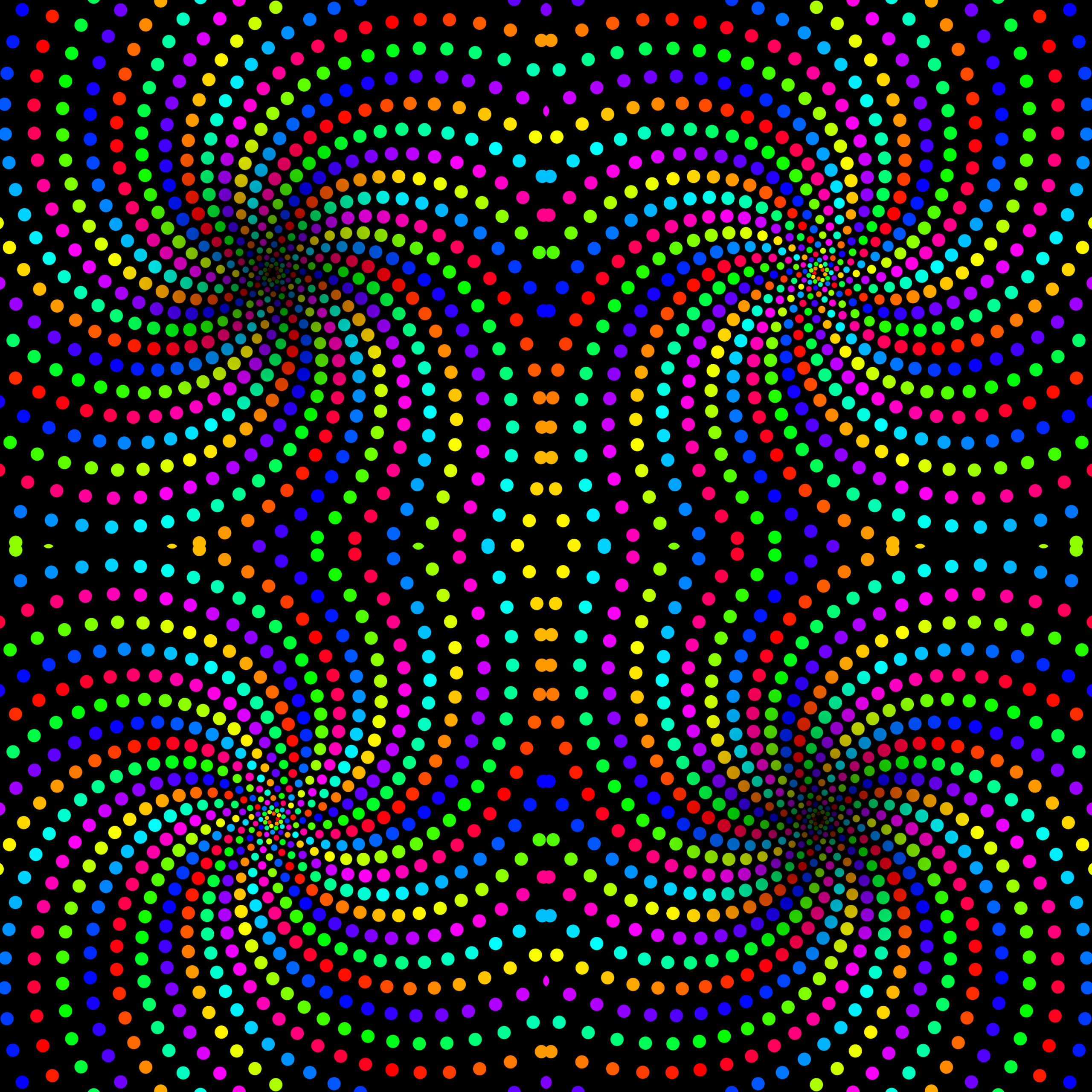
Fibonacci spiral
These are spirals that are constructed making use of the golden ratio.

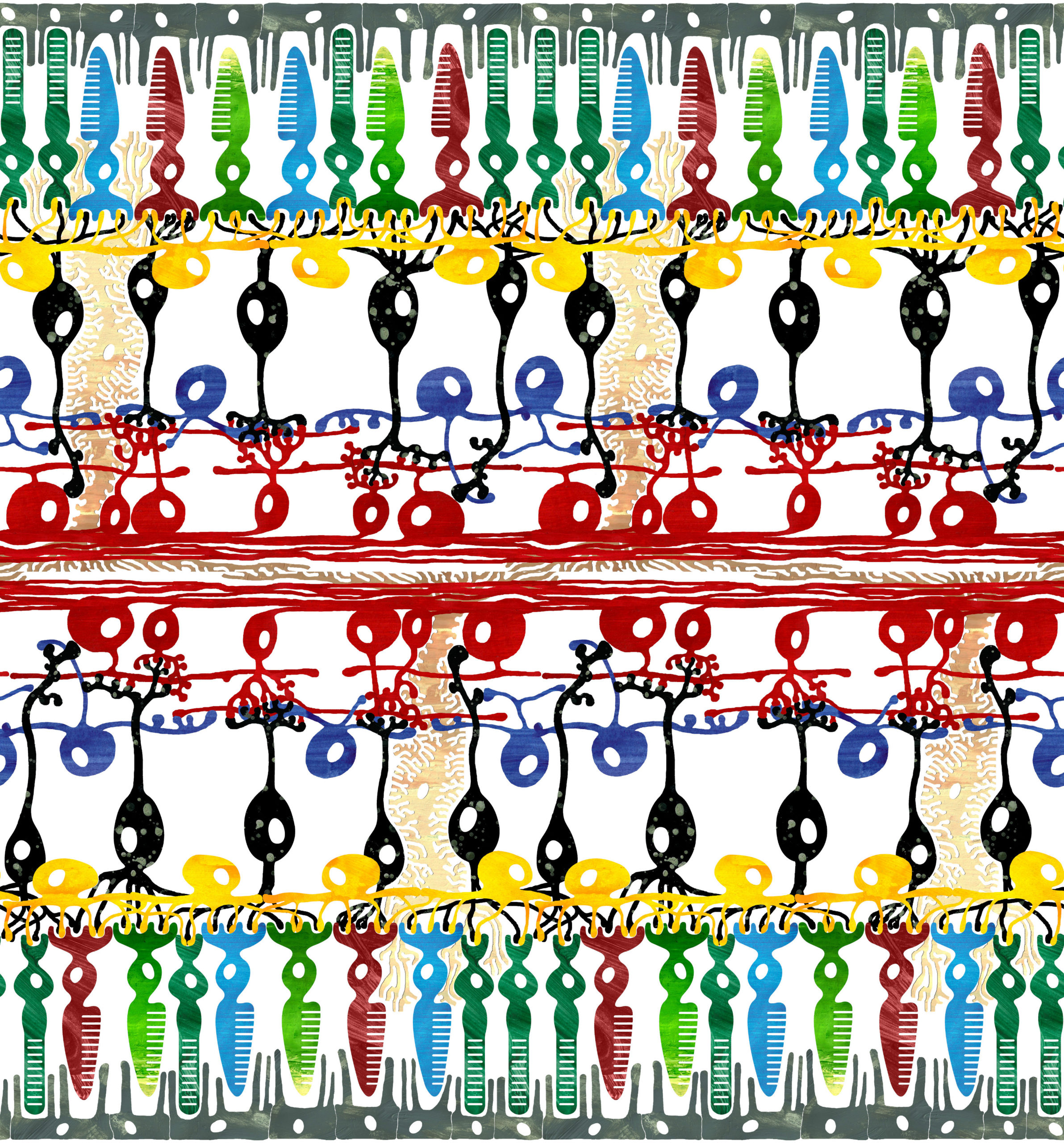
Retina
This is a schematic illustration of the retina, the thin layer of tissue at the back of your eye that turns the entering light into electrical signals. The retina consists of several layers of different types of brain cells (neurons). These neurons process the signals before it is send to the rest of the brain, where even more processing takes place. In the pattern design, the retina is flipped half of the time. We often show the retina as in the image on the right. However, in reality the retina is upside down, the light has to pass through all the cell layers before arriving at the light sensitive cells (the dark red, blue and green cells).
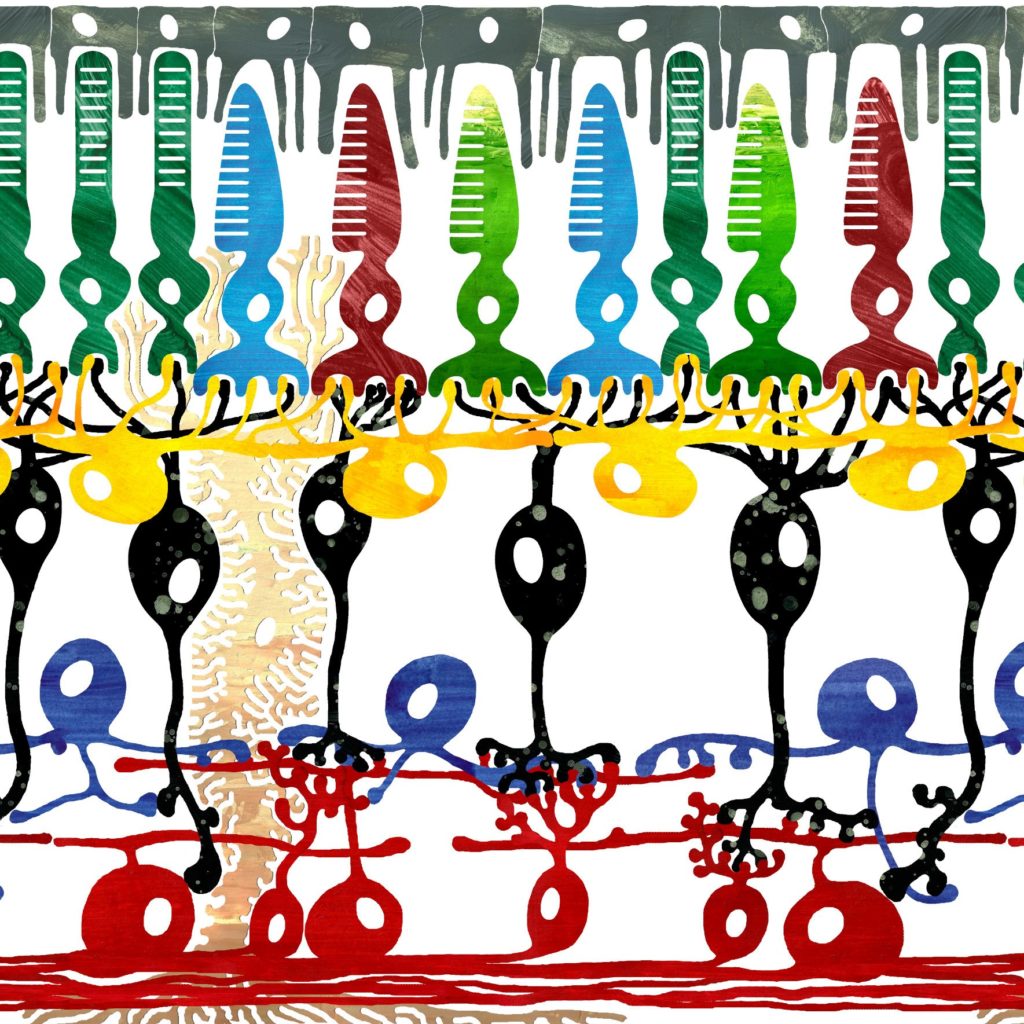
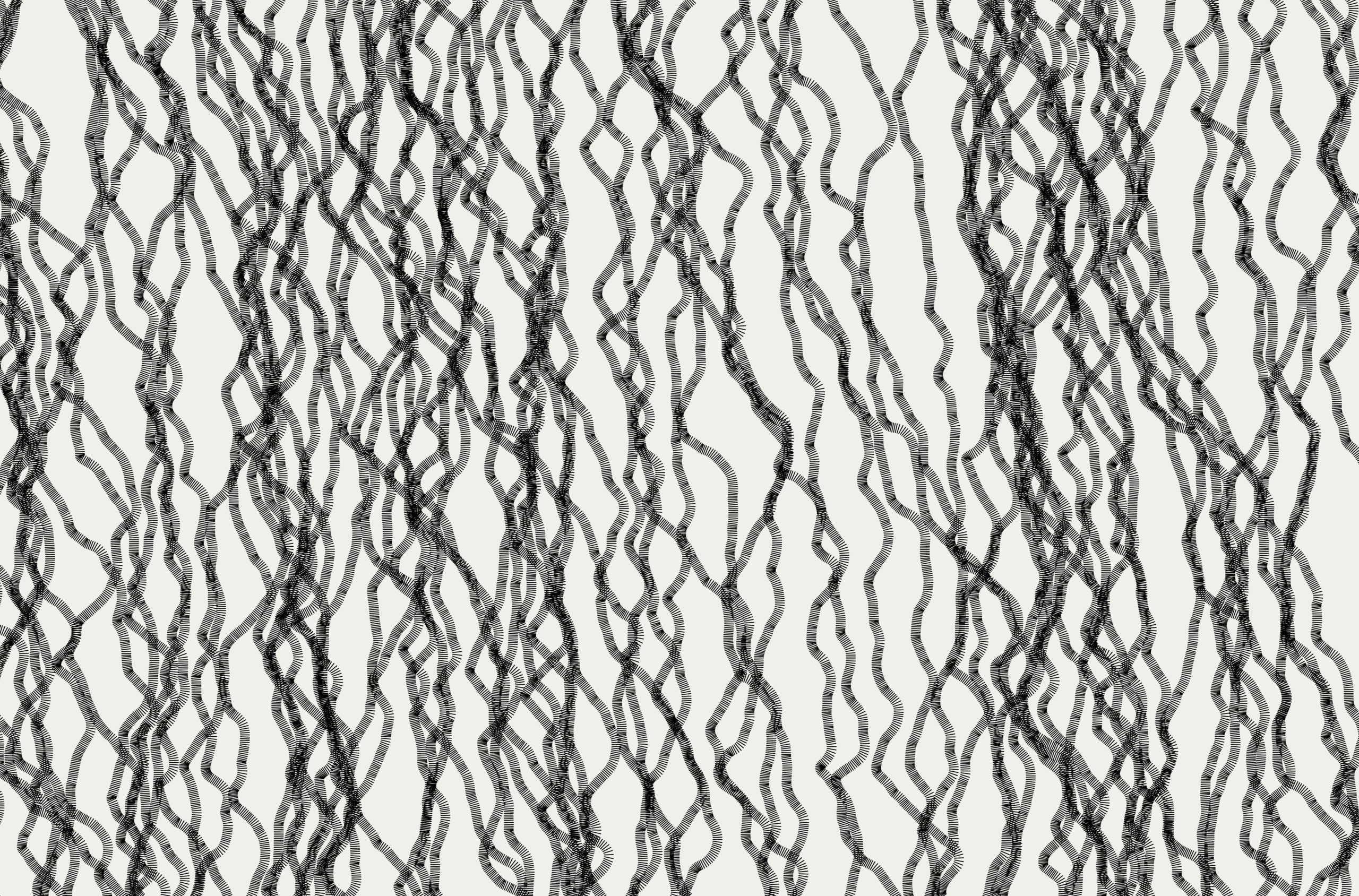
Moiré worms
These worm-like lines raining down sometimes overlap. This results in additional patterns appearing called Moiré patterns.
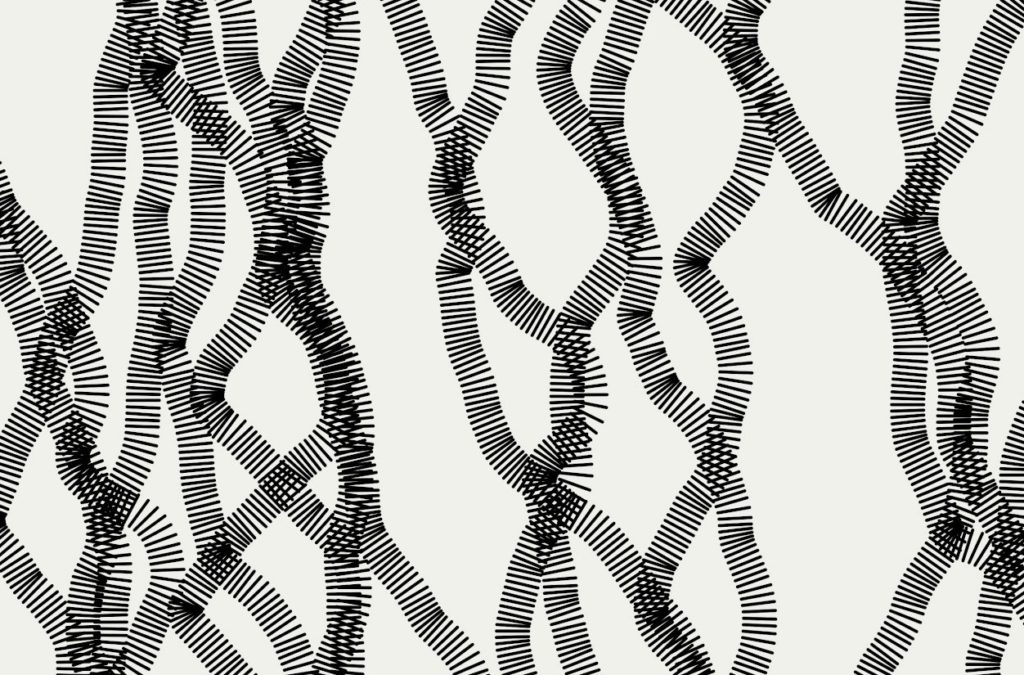

Kaleidoscope_Flowers_01
This pattern is part of a coding project for which I wrote a programme to mimic a kaleidoscope. The kaleidoscope is an old Scottish invention making use of mirrors placed in a tube with some objects and pieces of glass at the bottom to create an infinite pattern of multiplied reflections. For this design the input was a photograph of the output of yet another code (just to keep it simple).

Kaleidoscope_flowers_02

Kaleidoscope_Flowers_03
This pattern is part of the Kaleidoscope project and is created using a computer code that mimics a kaleidoscope using a similar input to the previous designs.

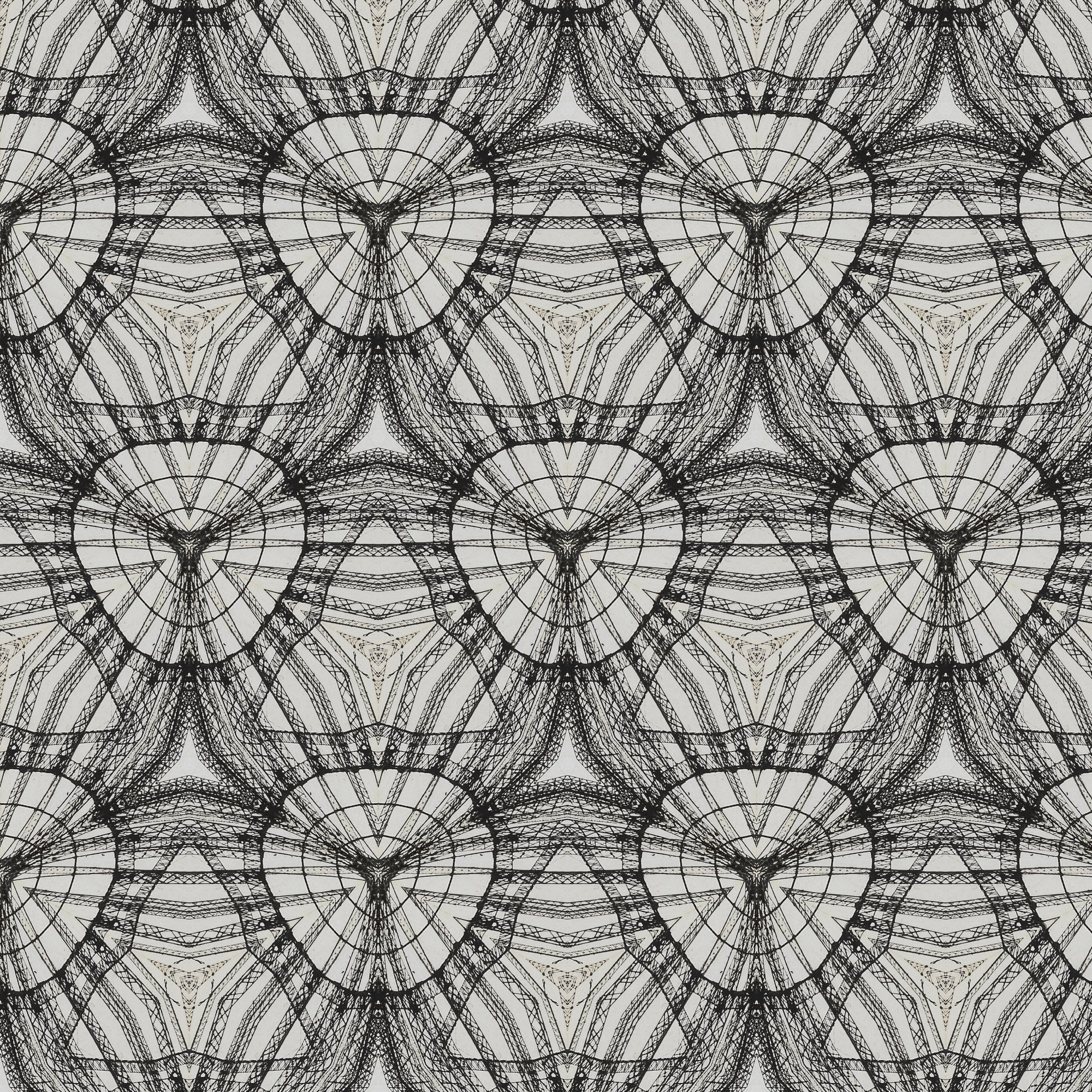
Kaleidoscope_Zeppelin
For this design I used a code I wrote to mimic a kaleidoscope (it is part of the Kaleidoscope series). As input I used an old photo I once found in an antique shop in Brighton, shown on the right. After some research I discovered that it was a photo of a zeppelin named L33 that crashed in Essex in 1916.
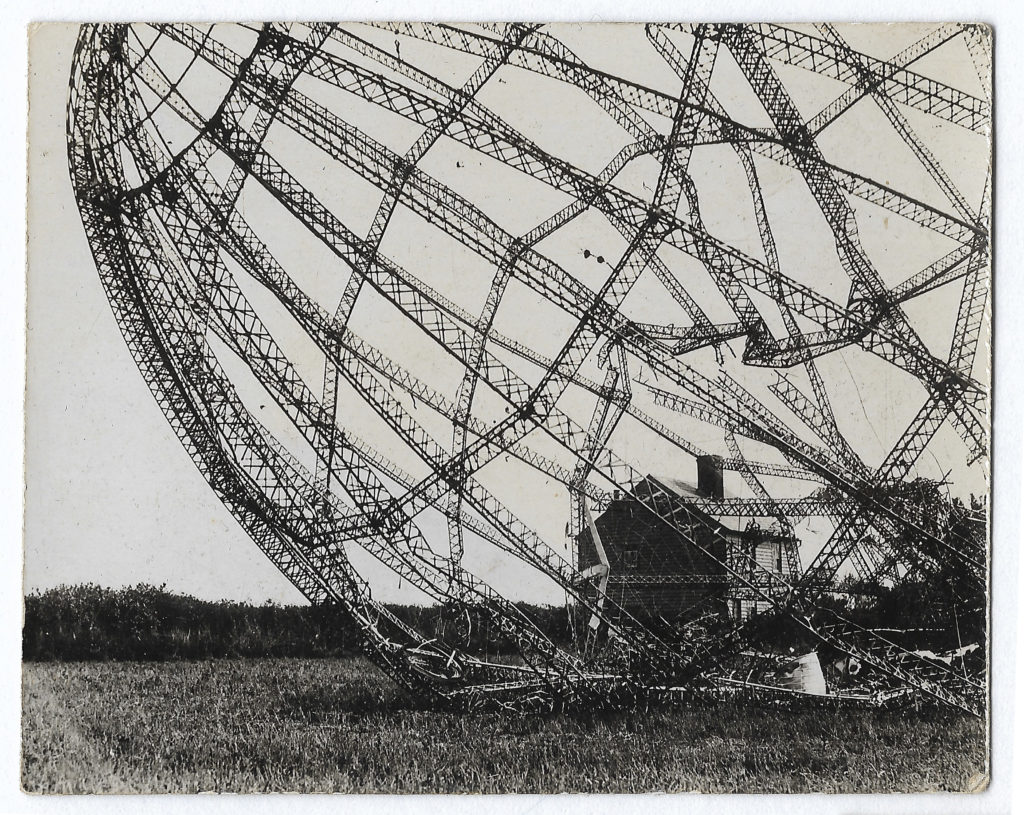
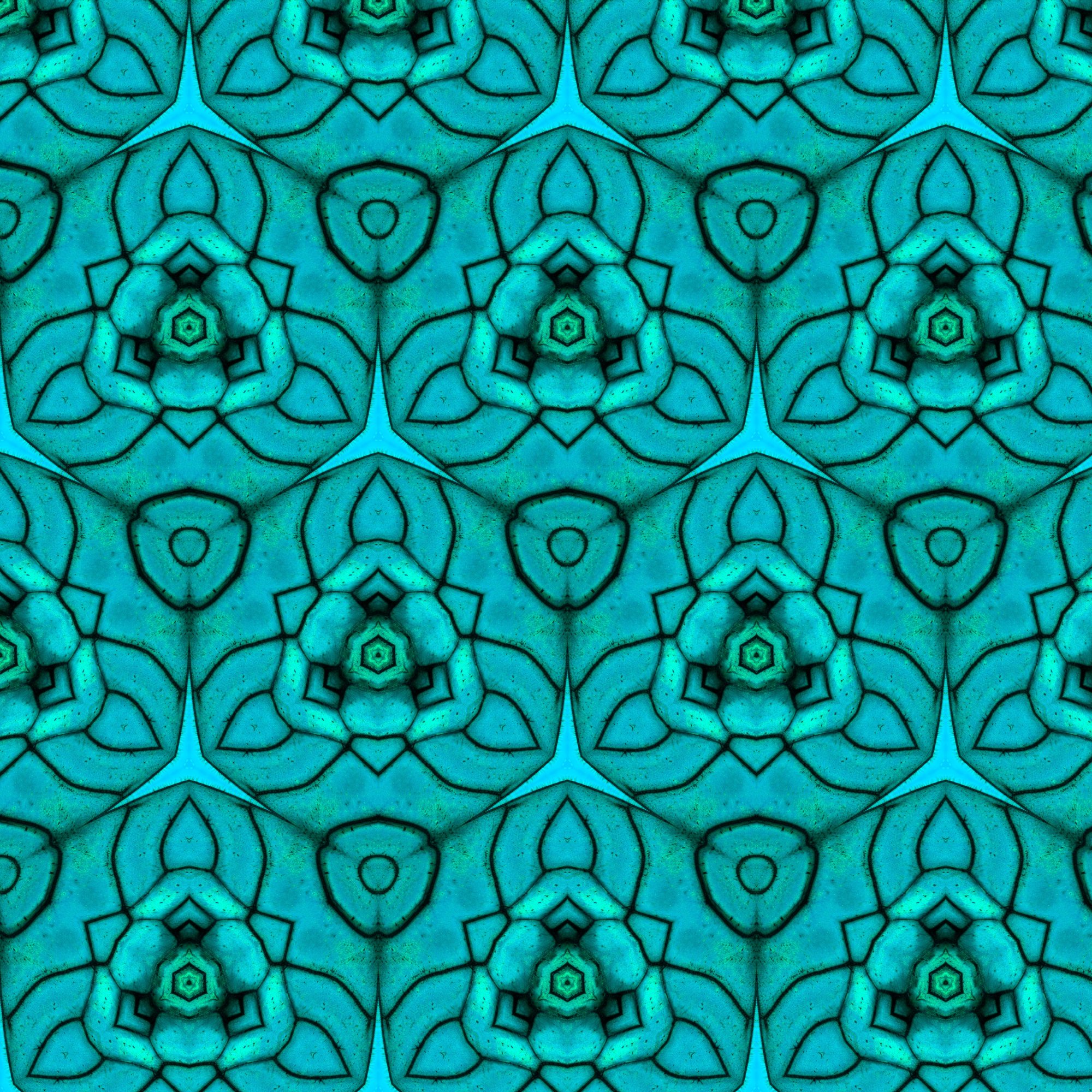
Kaleidoscope_wings_01
Like the previous patterns, these two designs are also part of the Kaleidoscope series, made using the code mimicking a kaleidoscope. This time the input consists of microscopic images of insect wings.
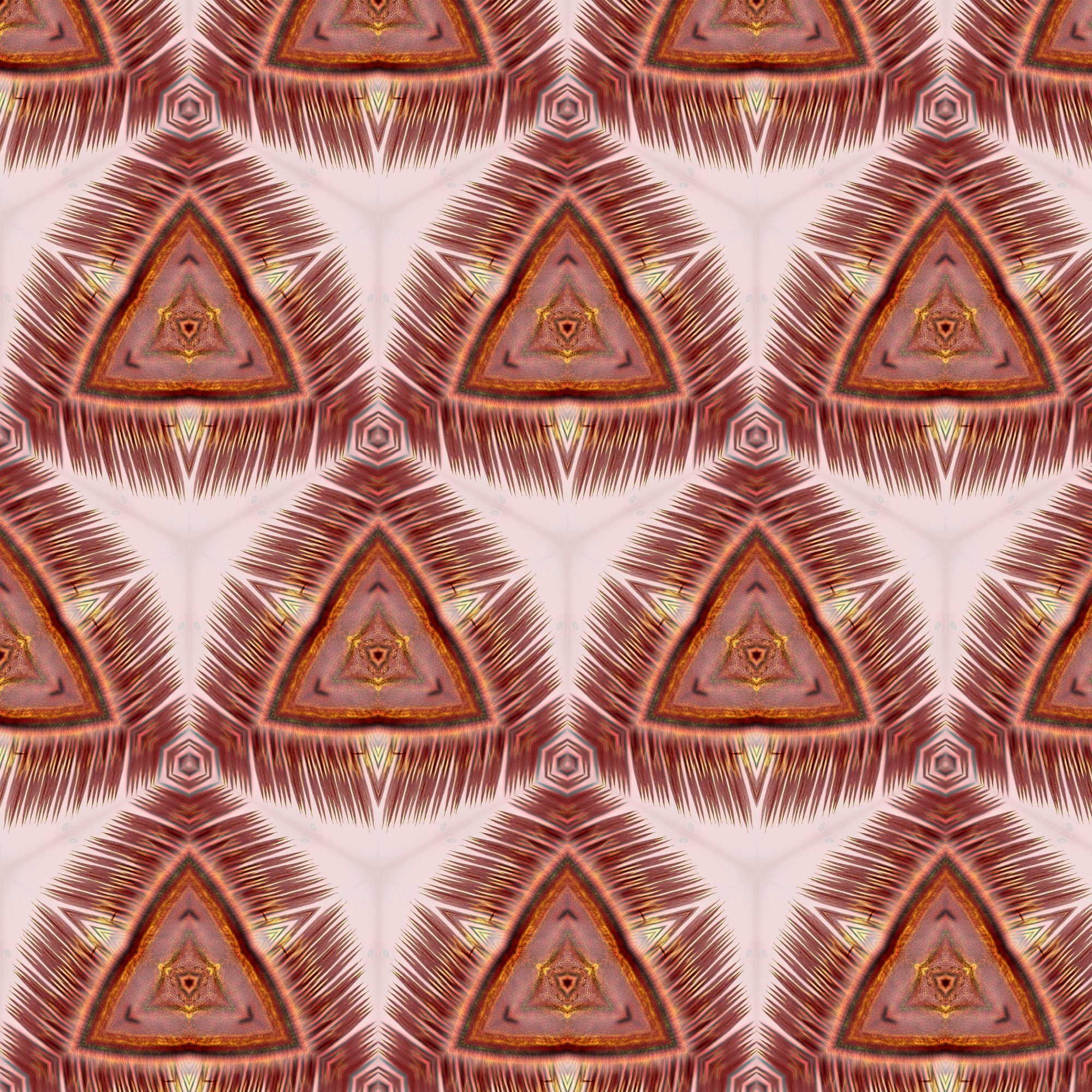
Kaleidoscope_wings_02
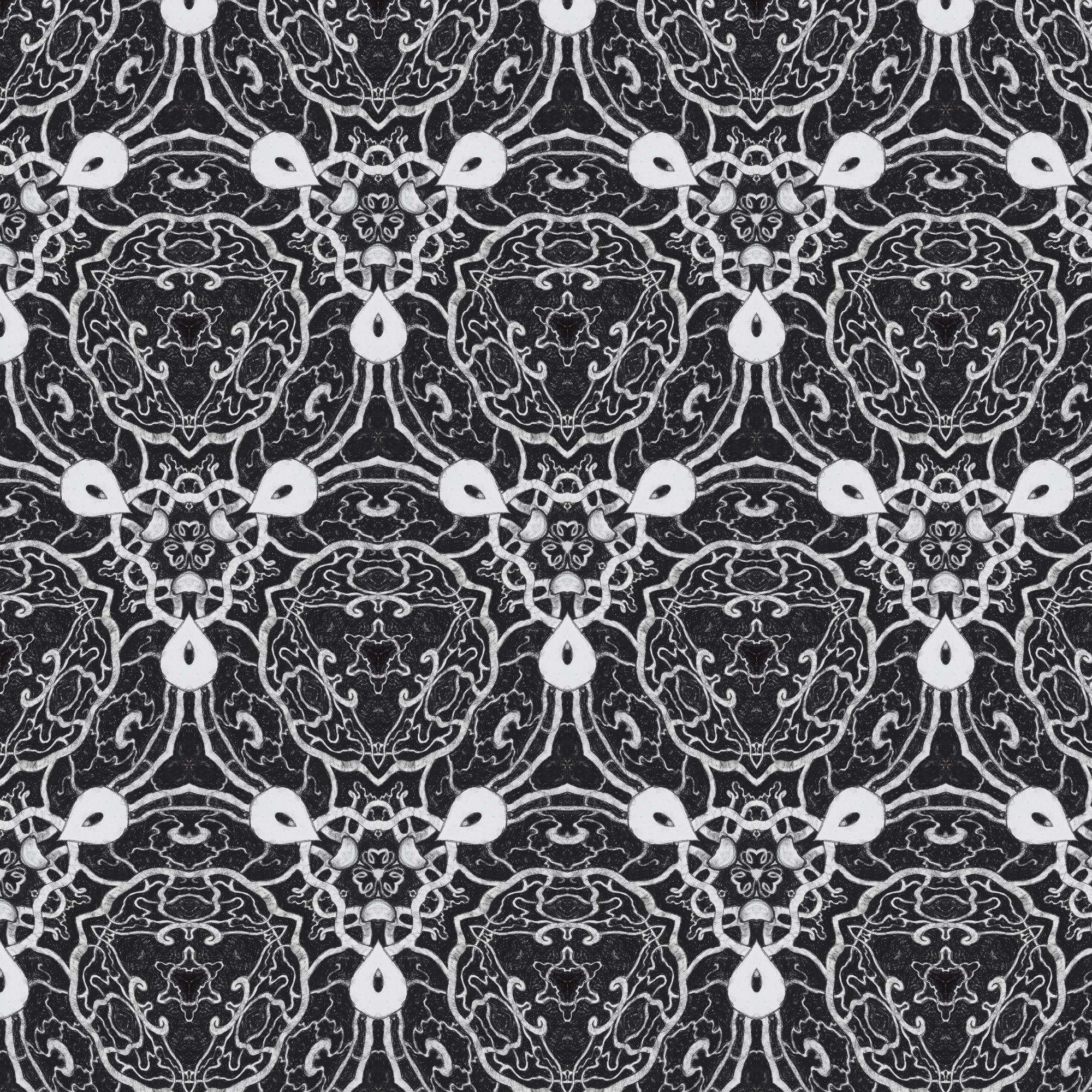
Kaleidoscope_Bloodvessels_01
Like the previous patterns, this design is also part of the Kaleidoscope series, made using the code mimicking a kaleidoscope. This time the input consists of a drawing of blood vessels in the brain.
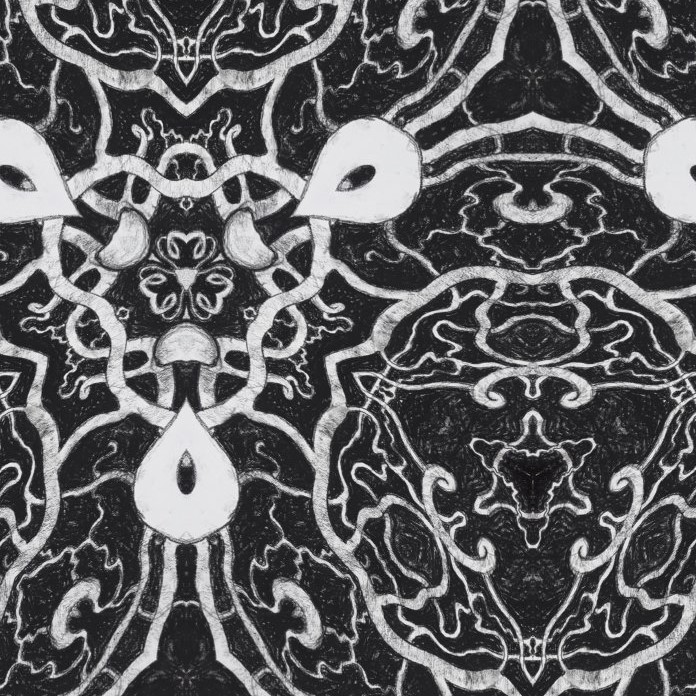
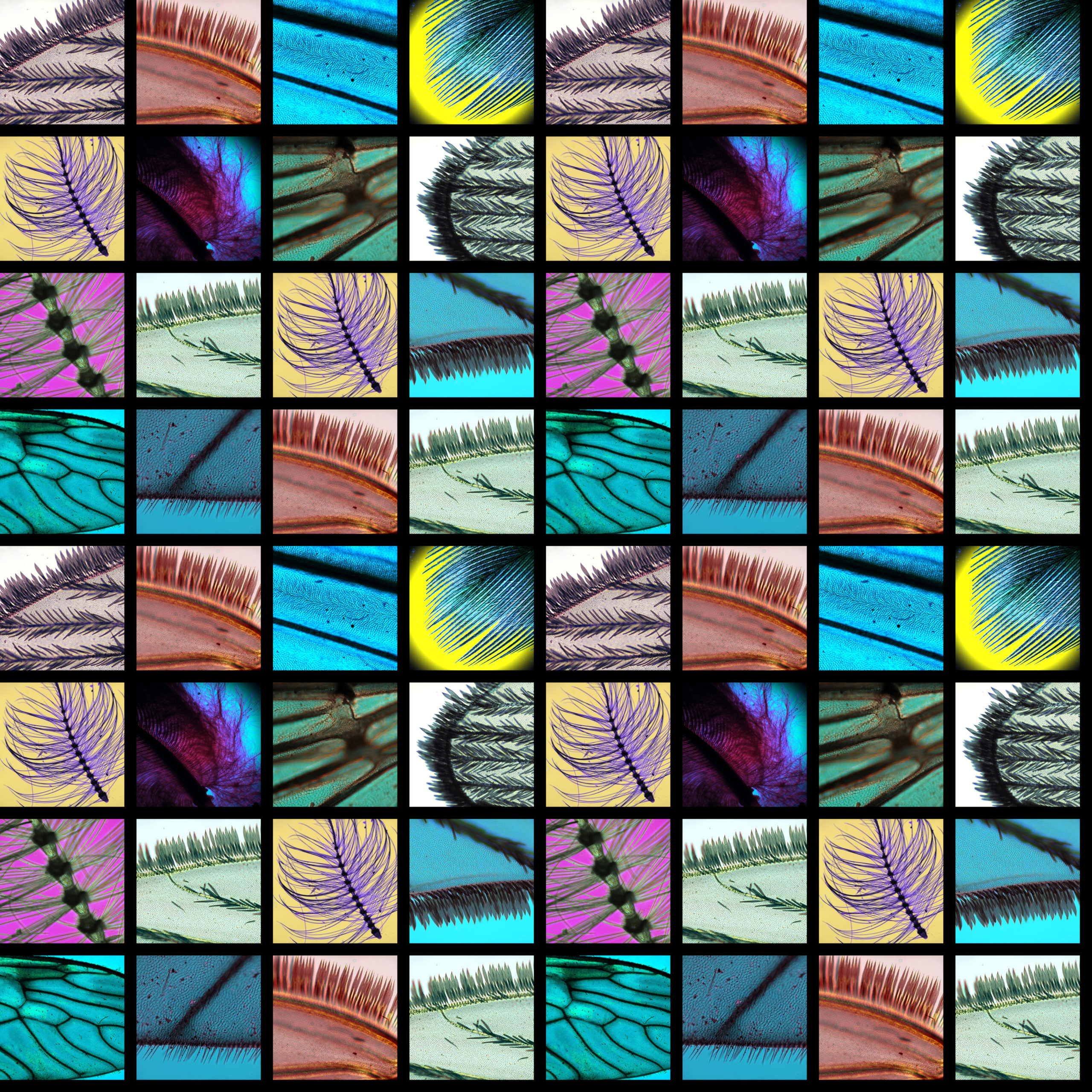
Microscopy images
This design is composed of microscopy images of insect wings, a feather and a mosquito antenna. Each image is actually an overlay of two or three images taken using different types of lenses (phase contrast objectives). I placed each image in a different colour channel to visualise the differences between them.
